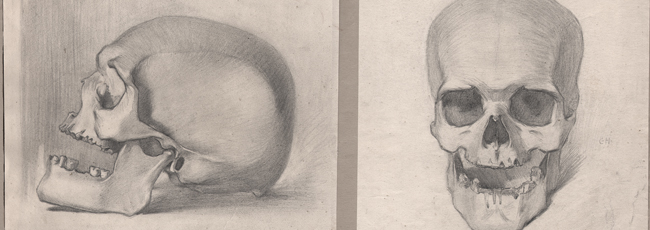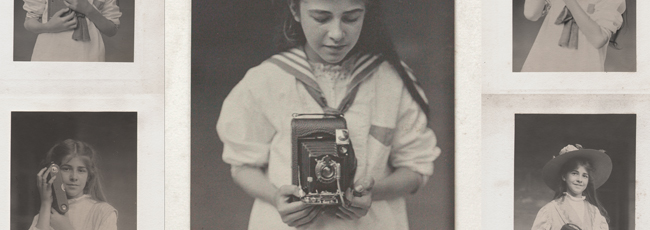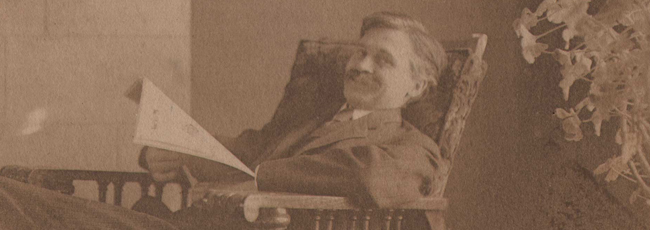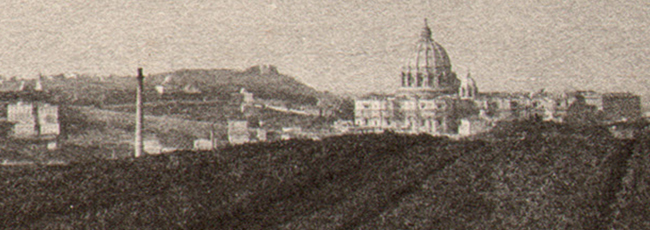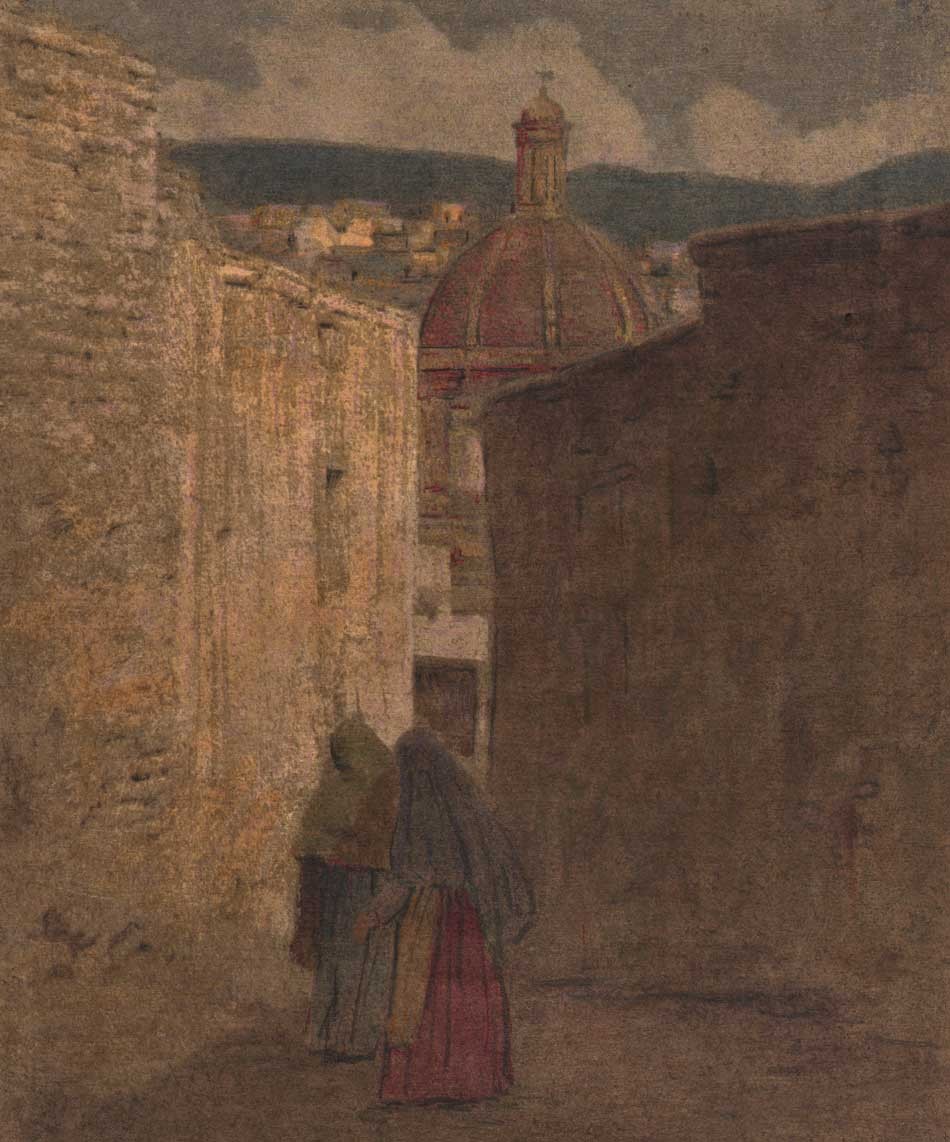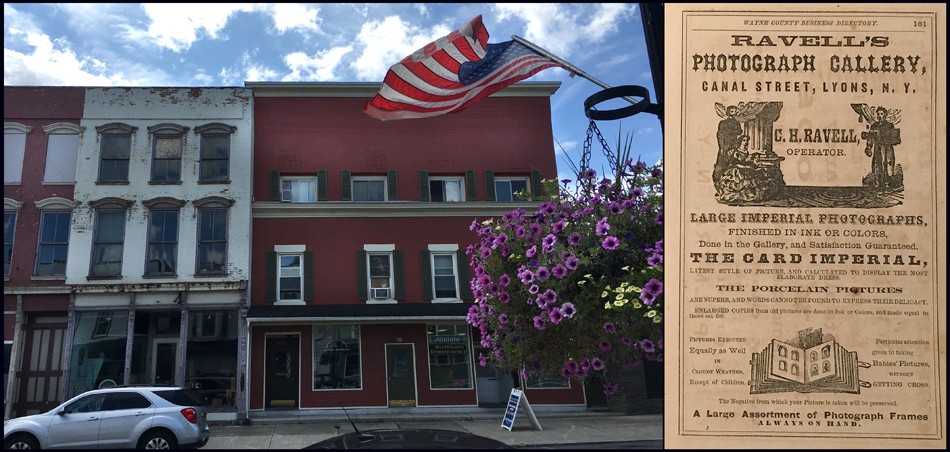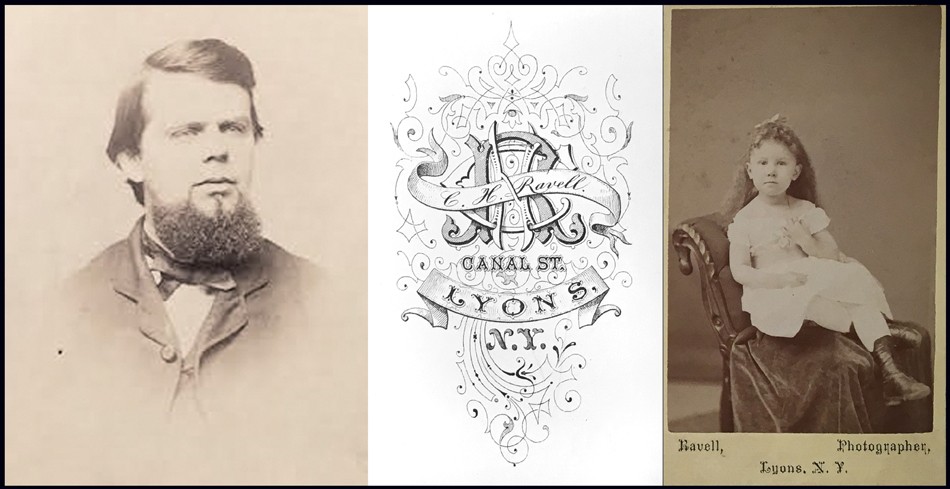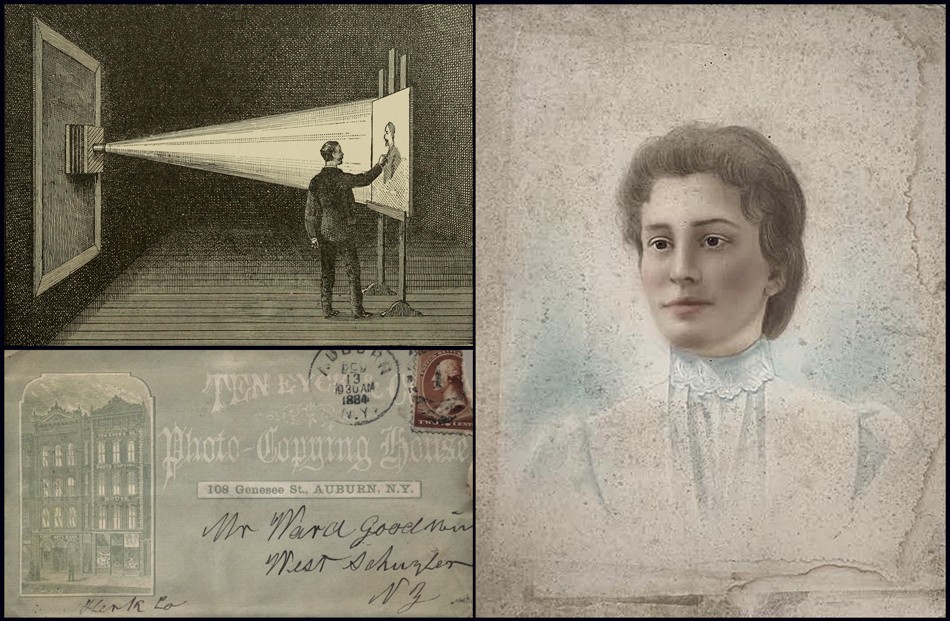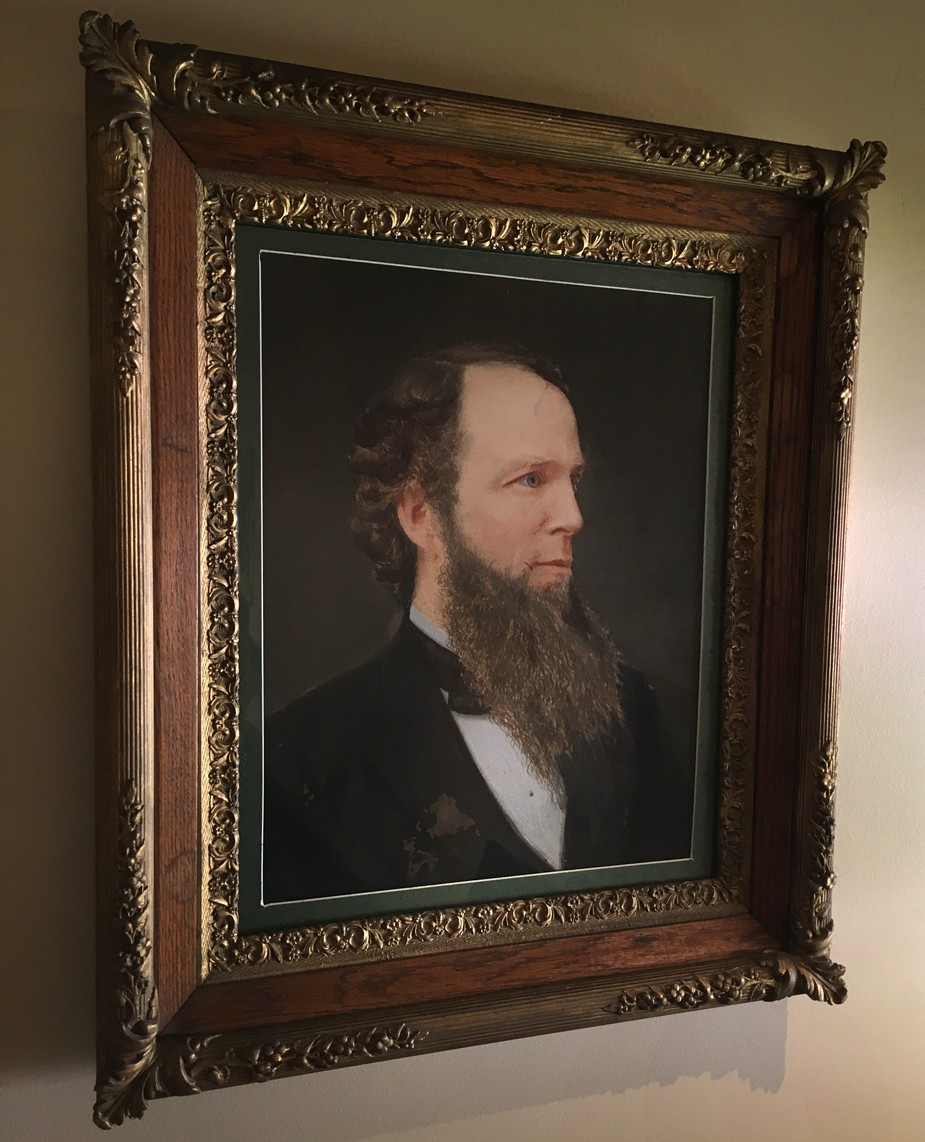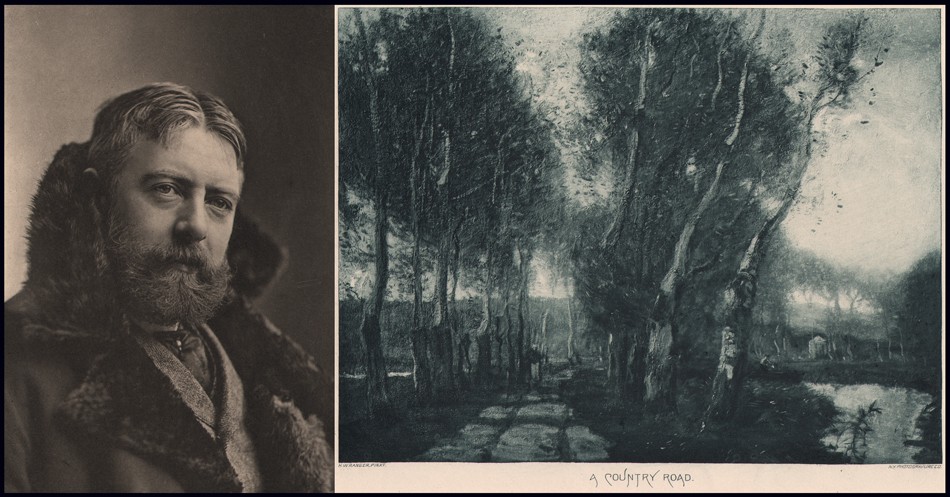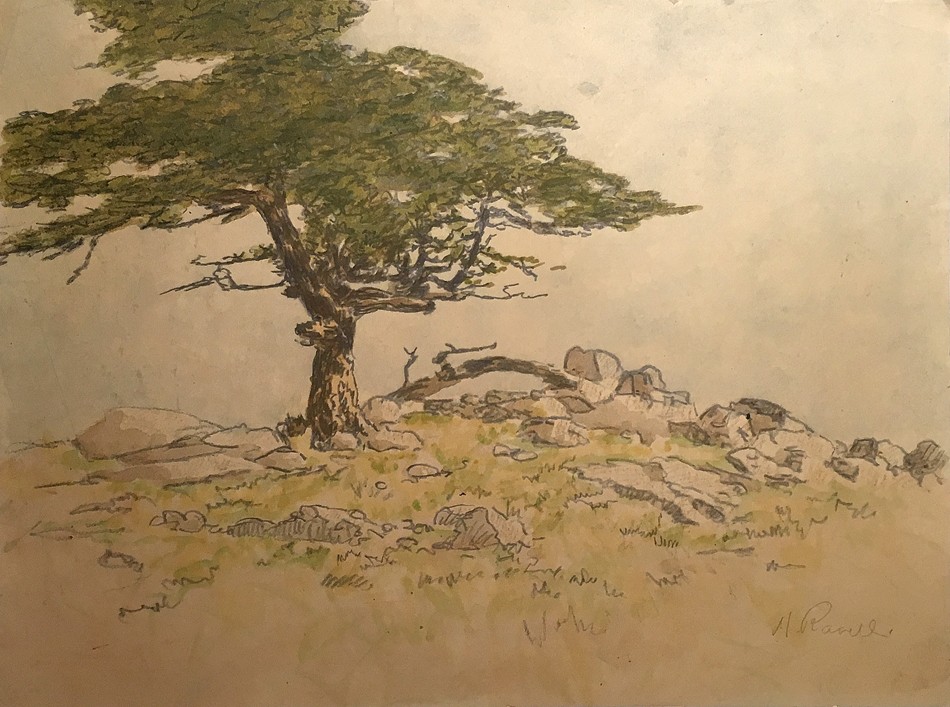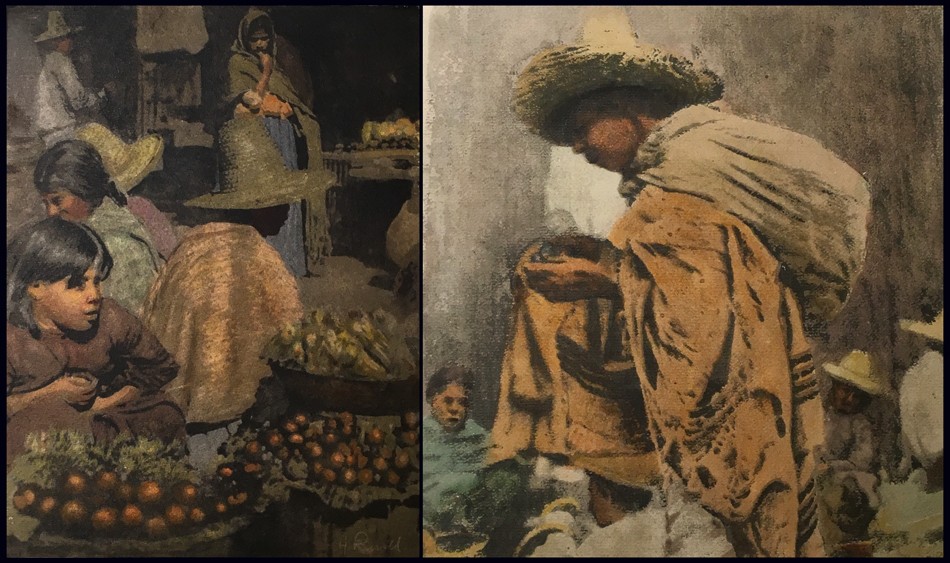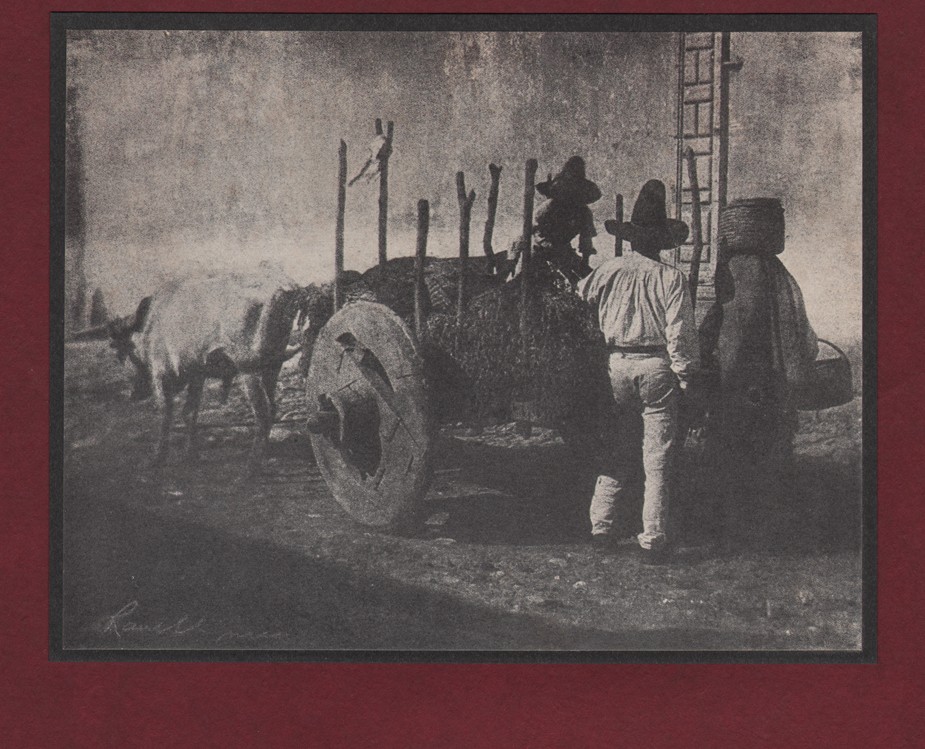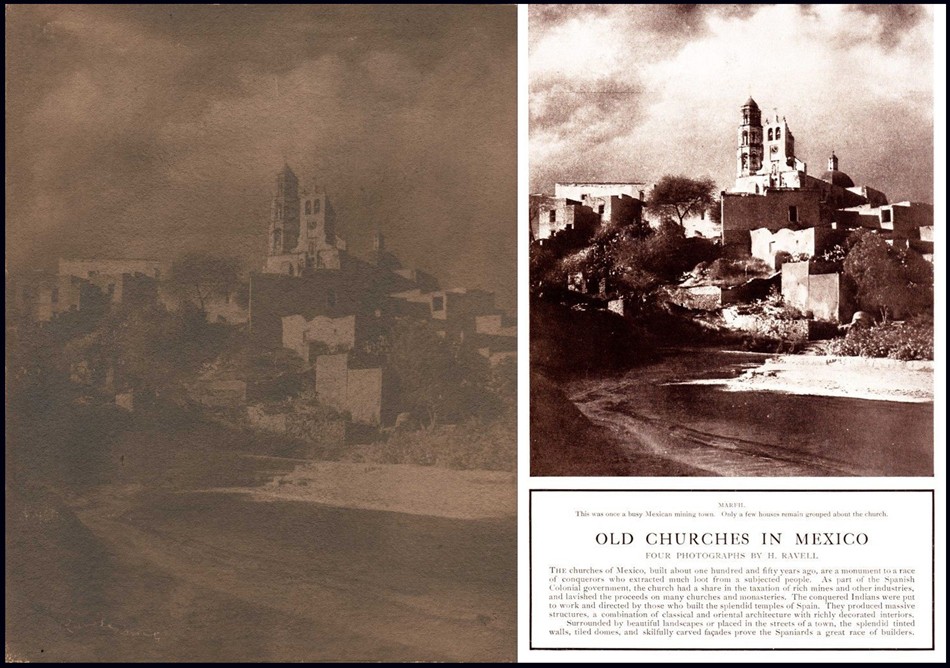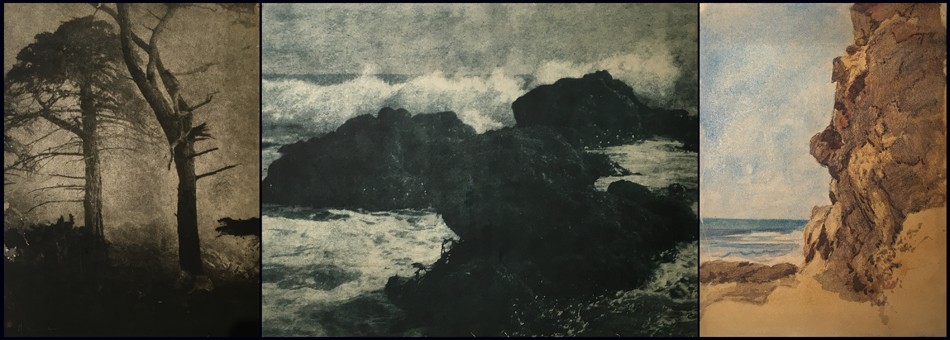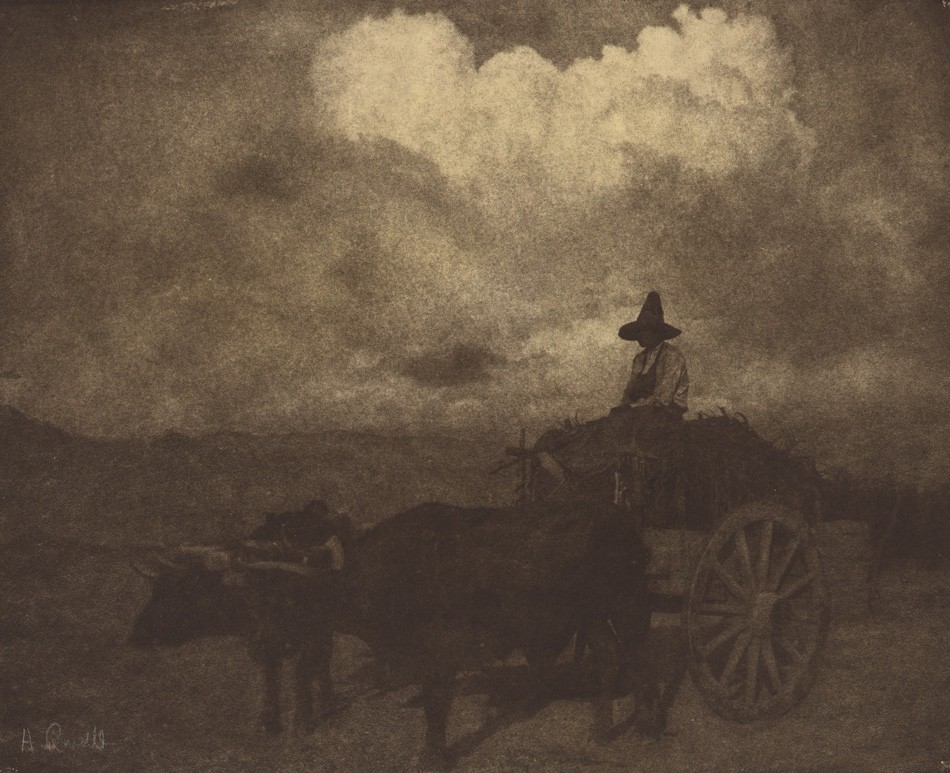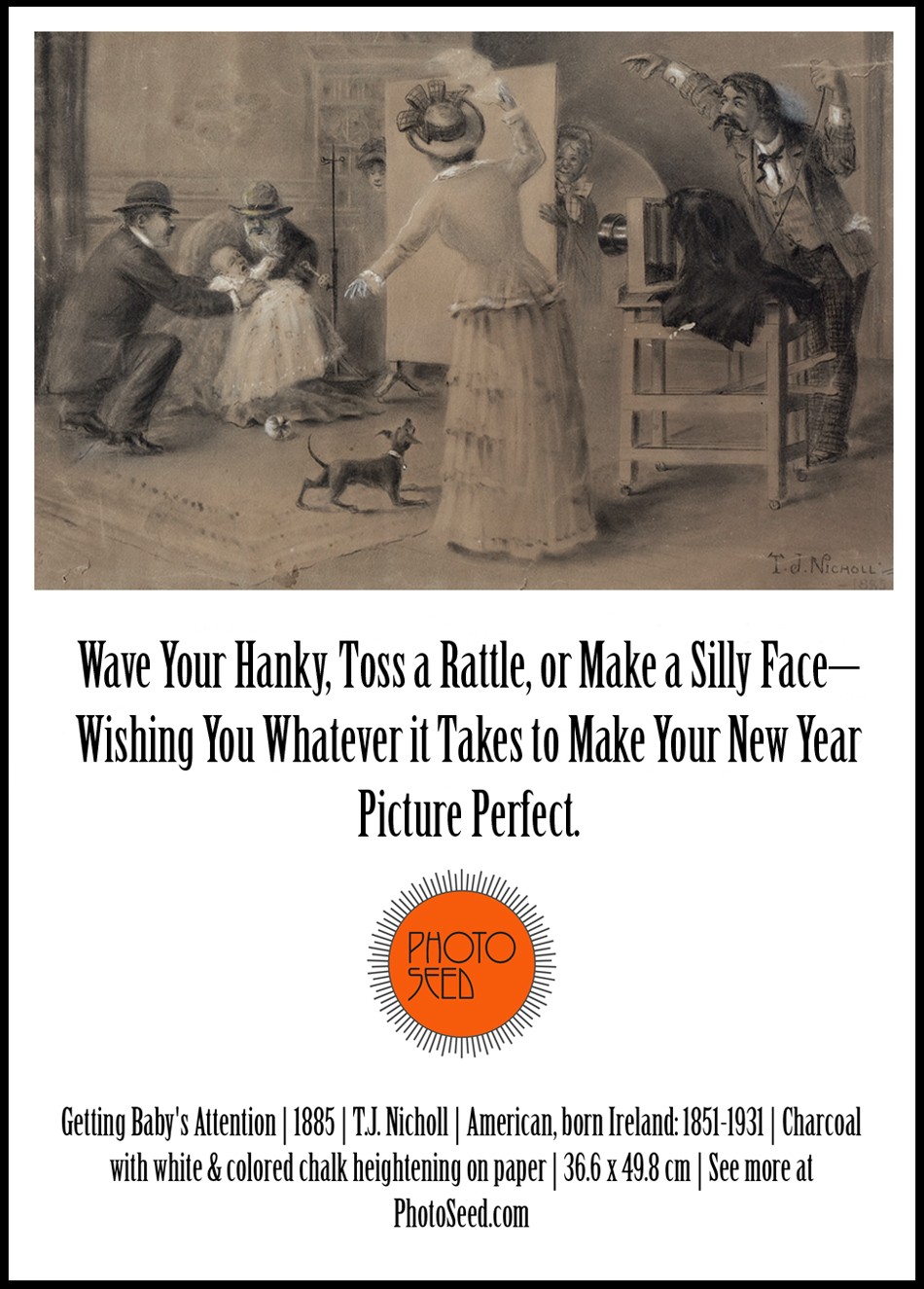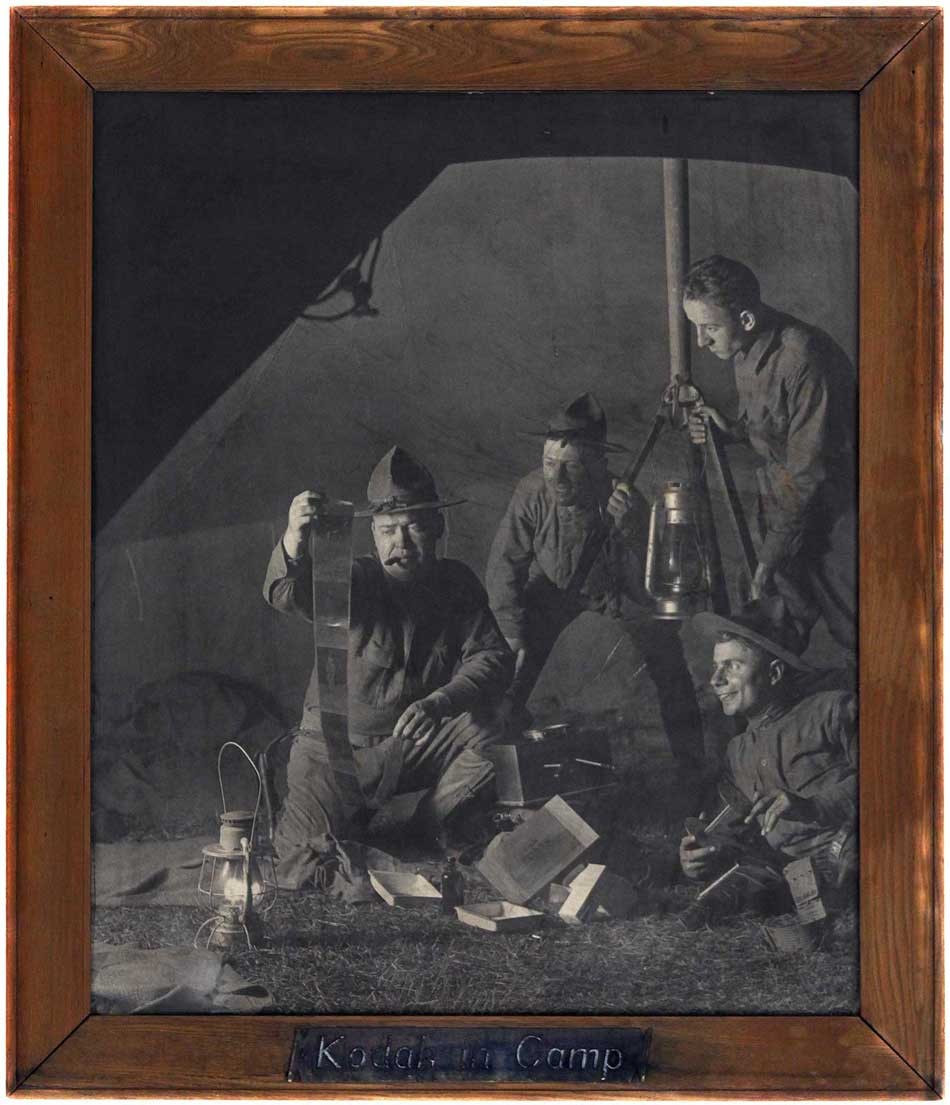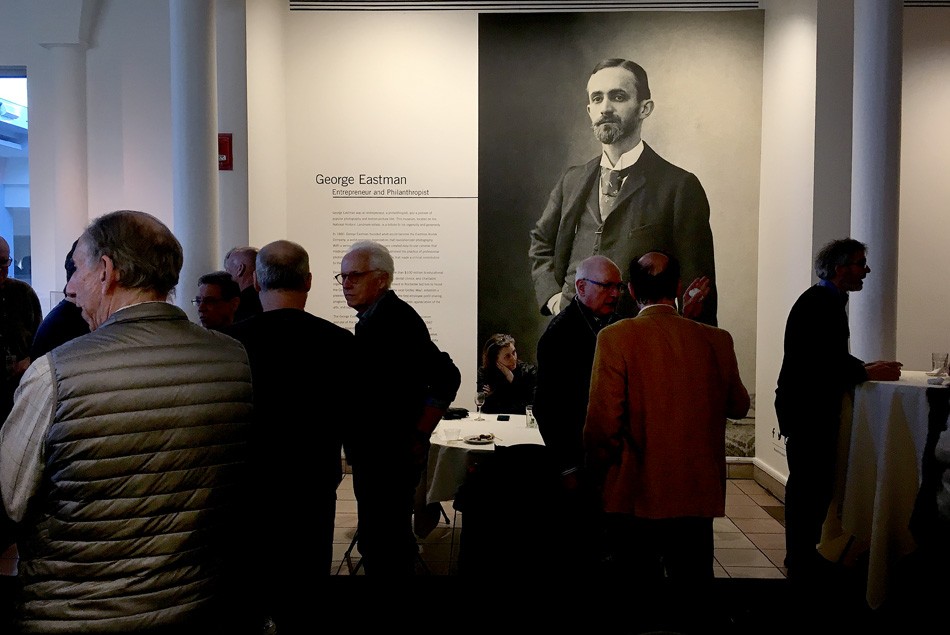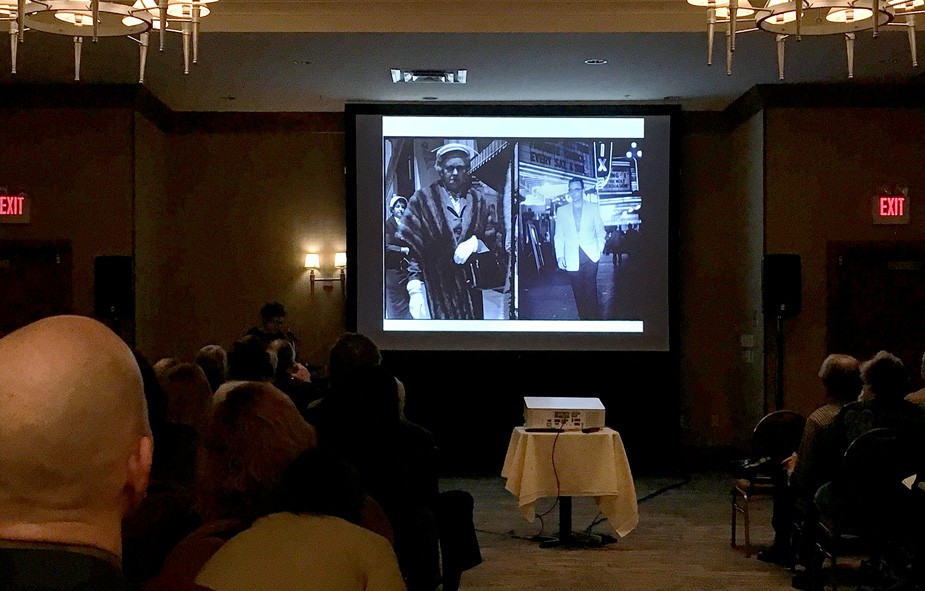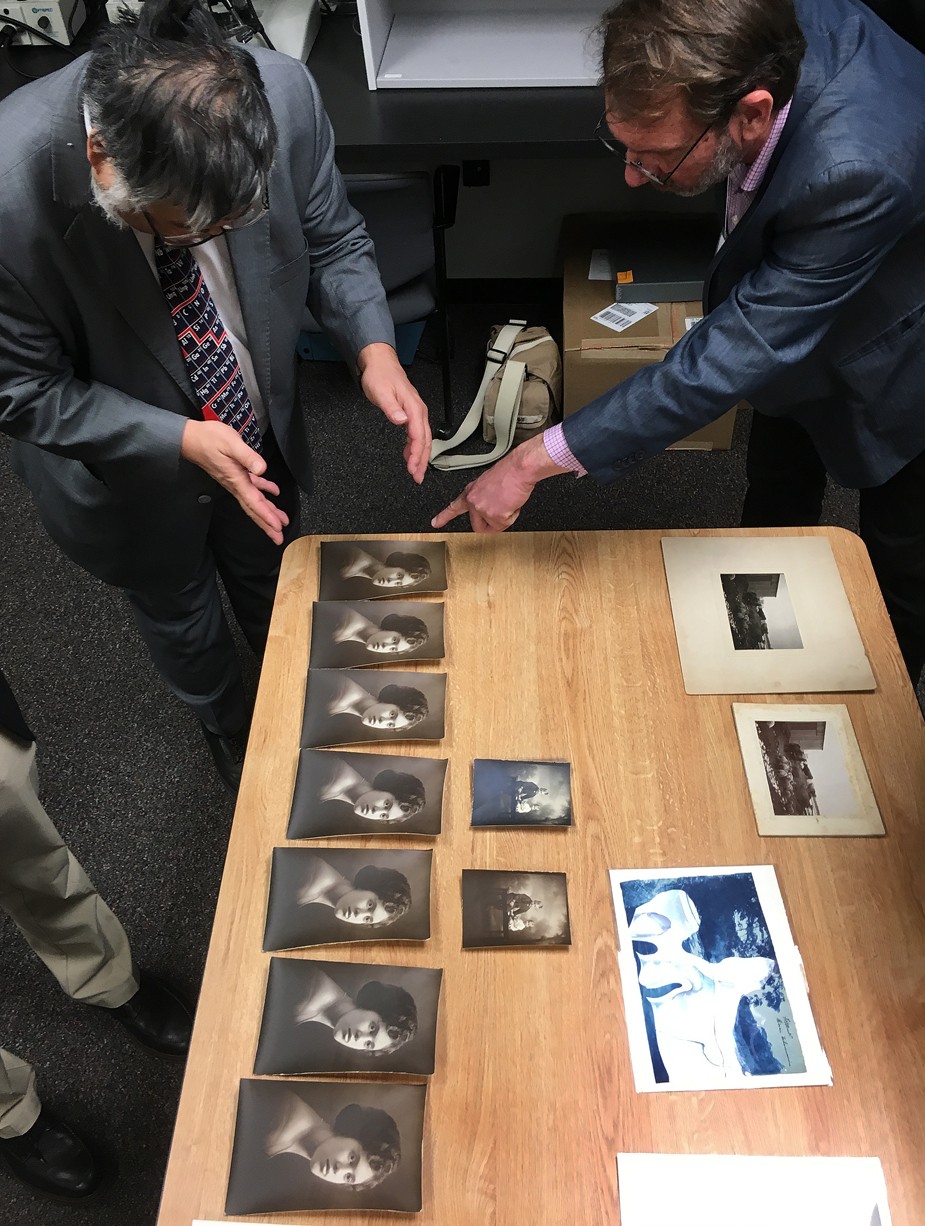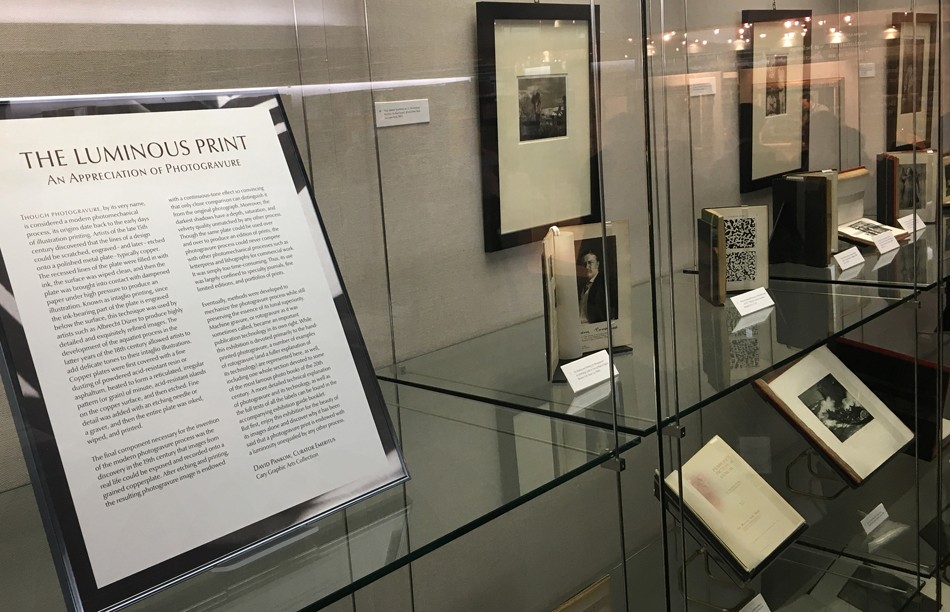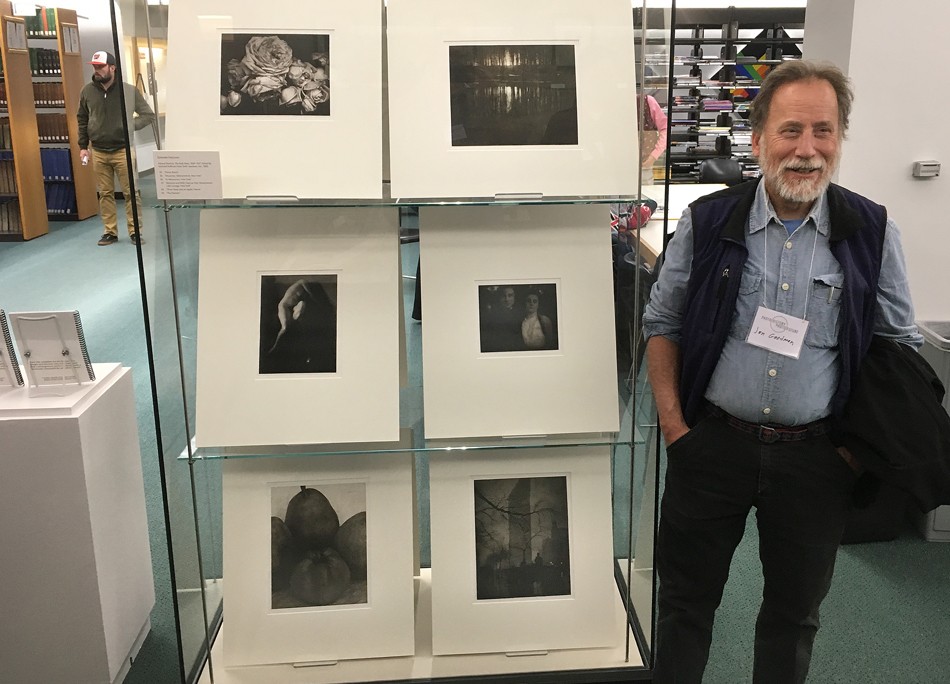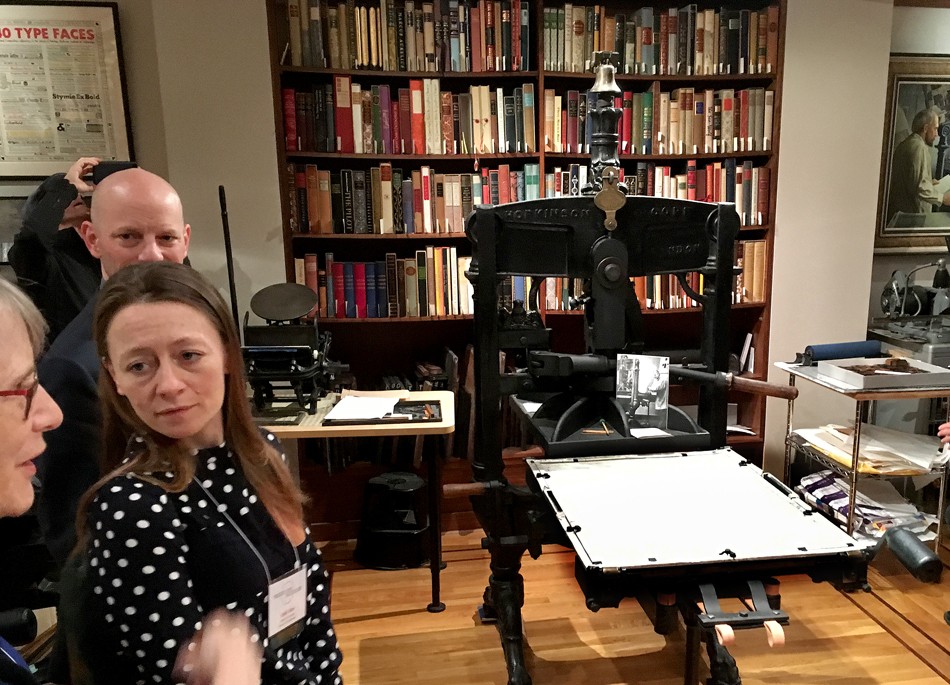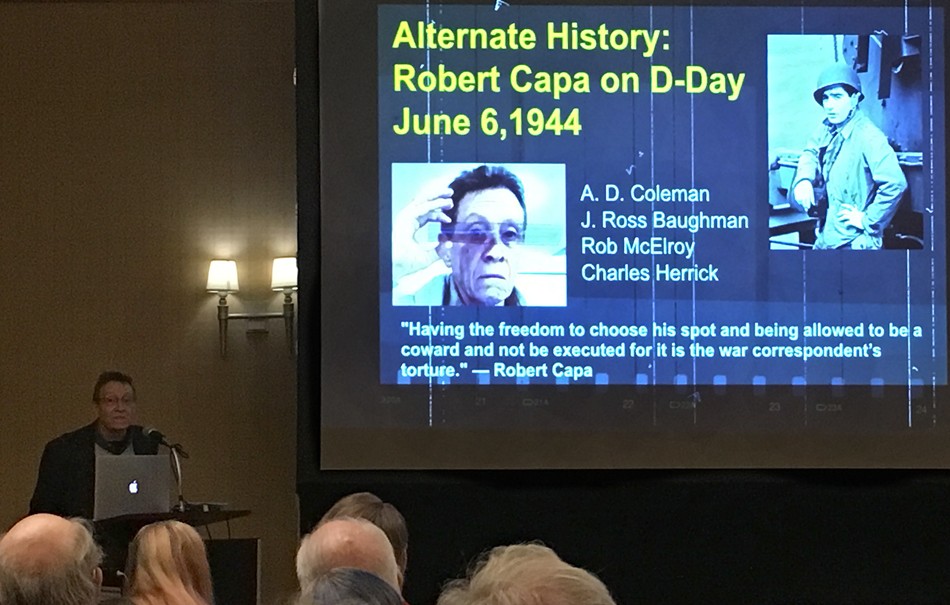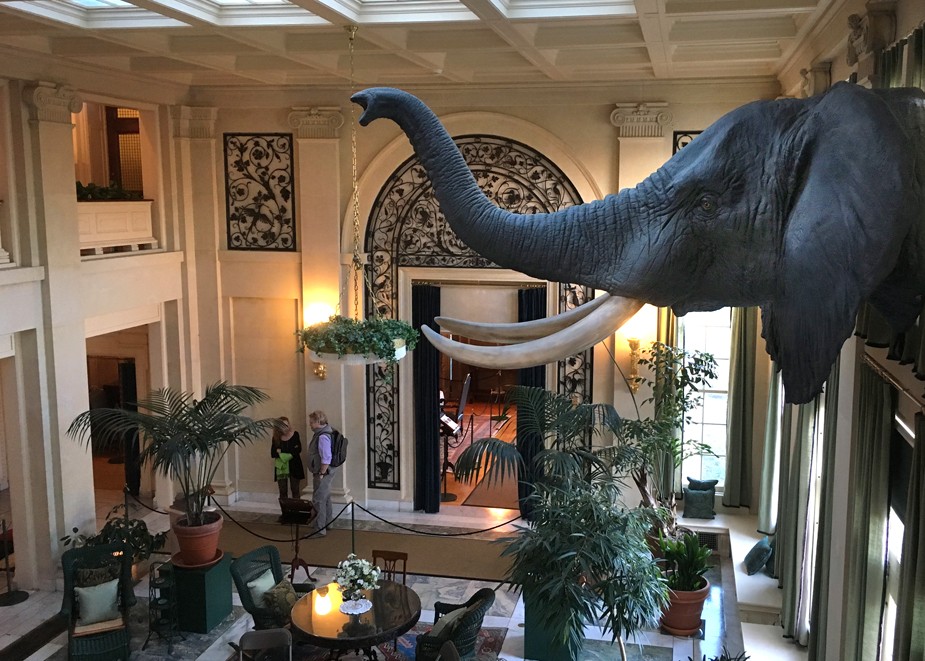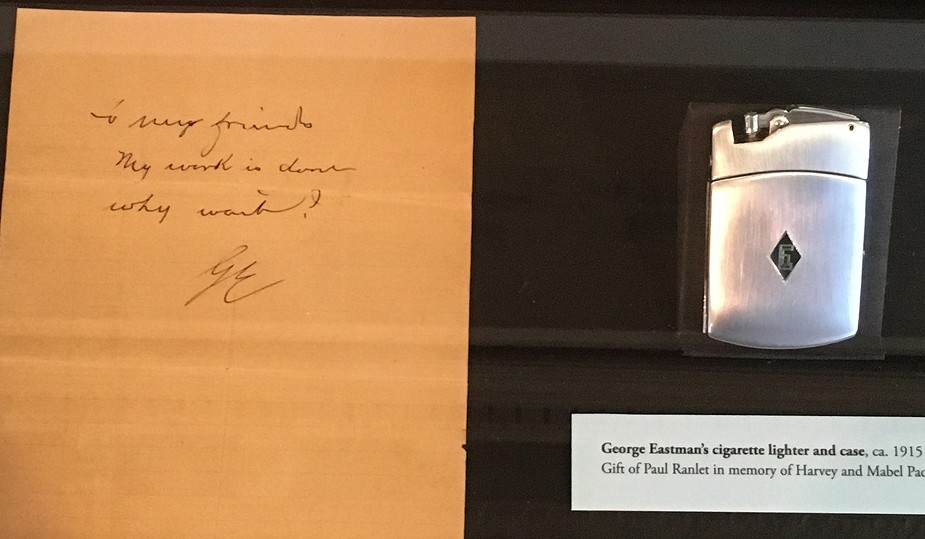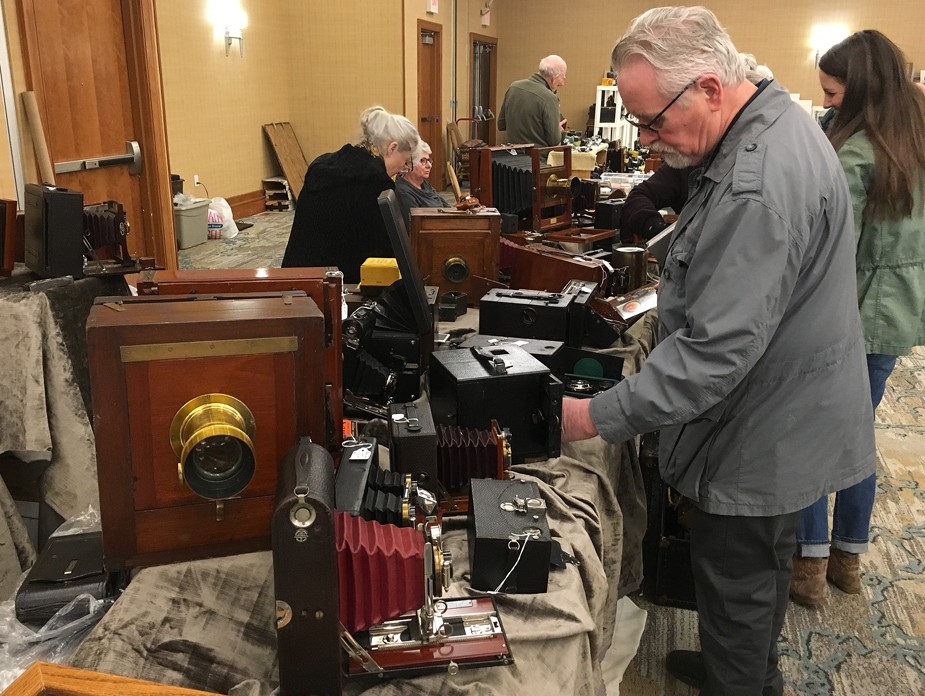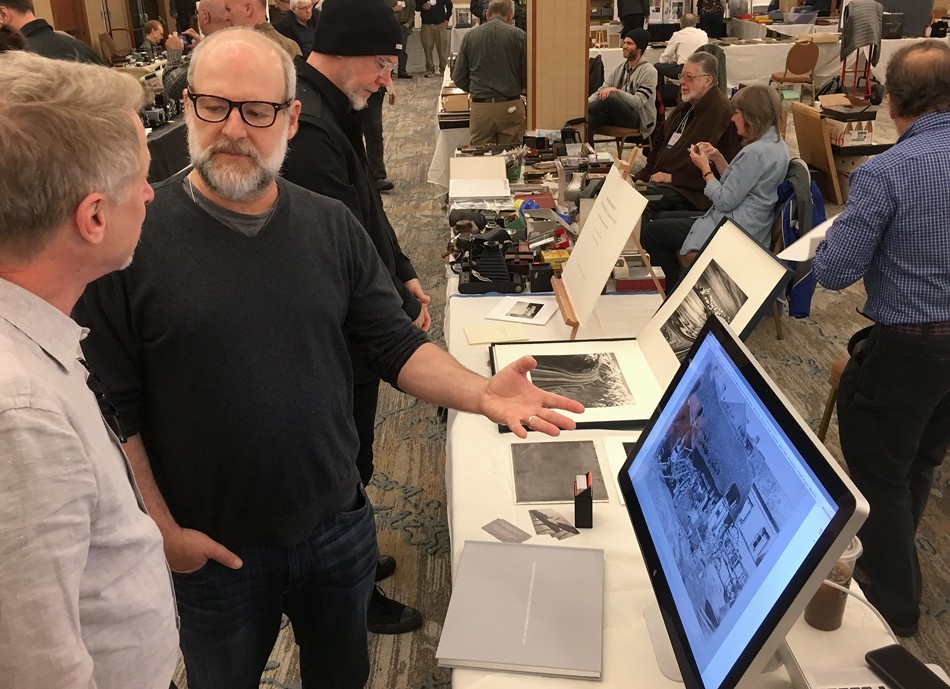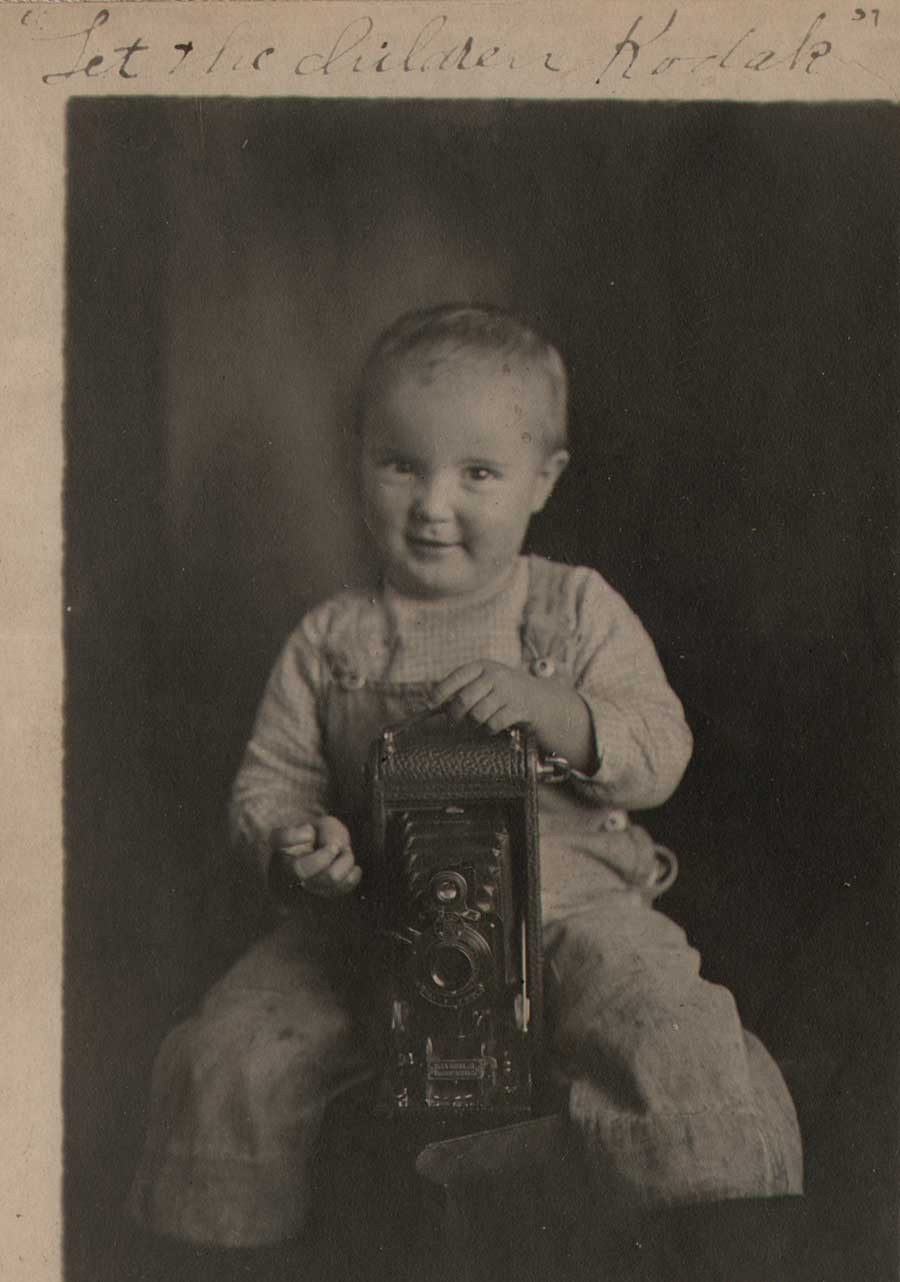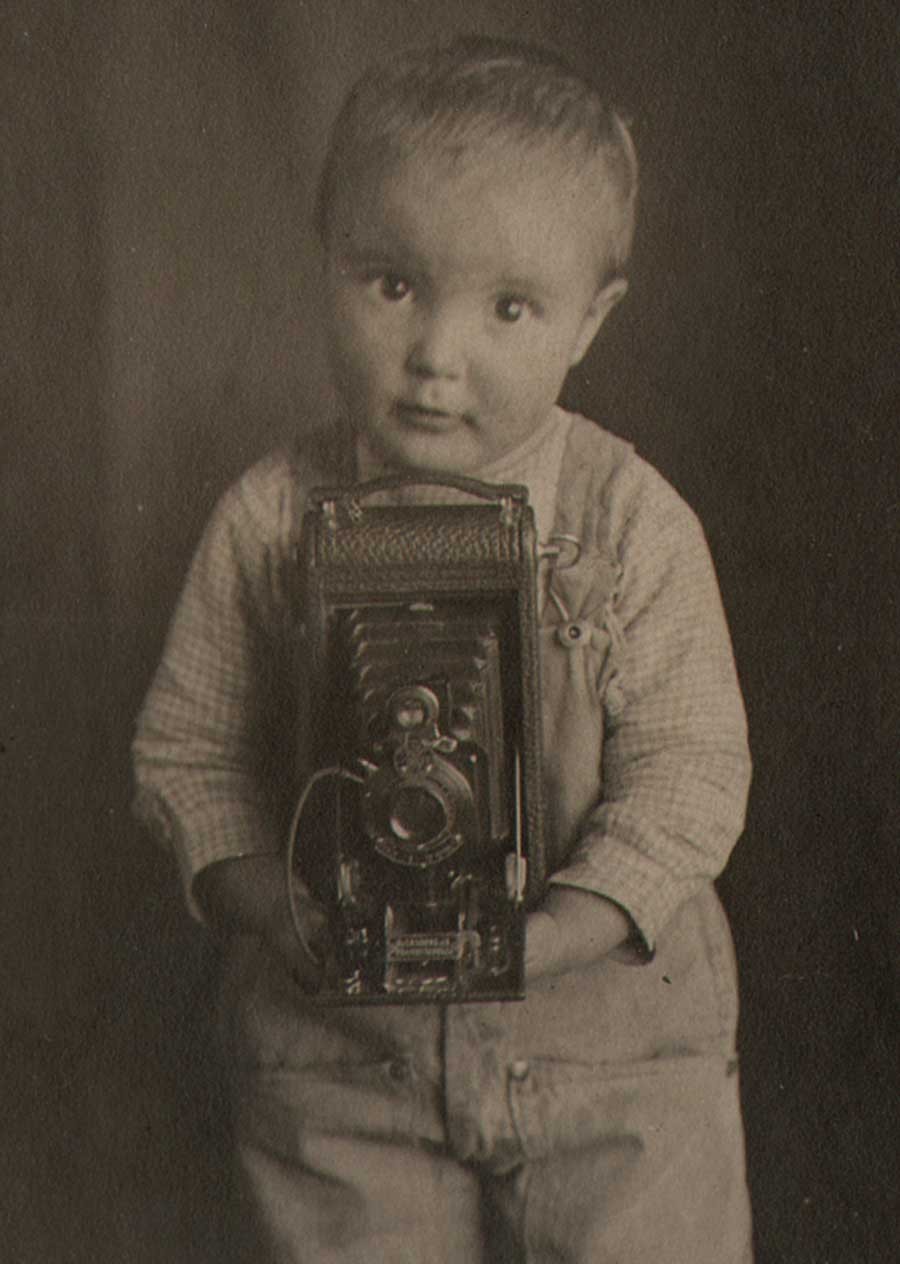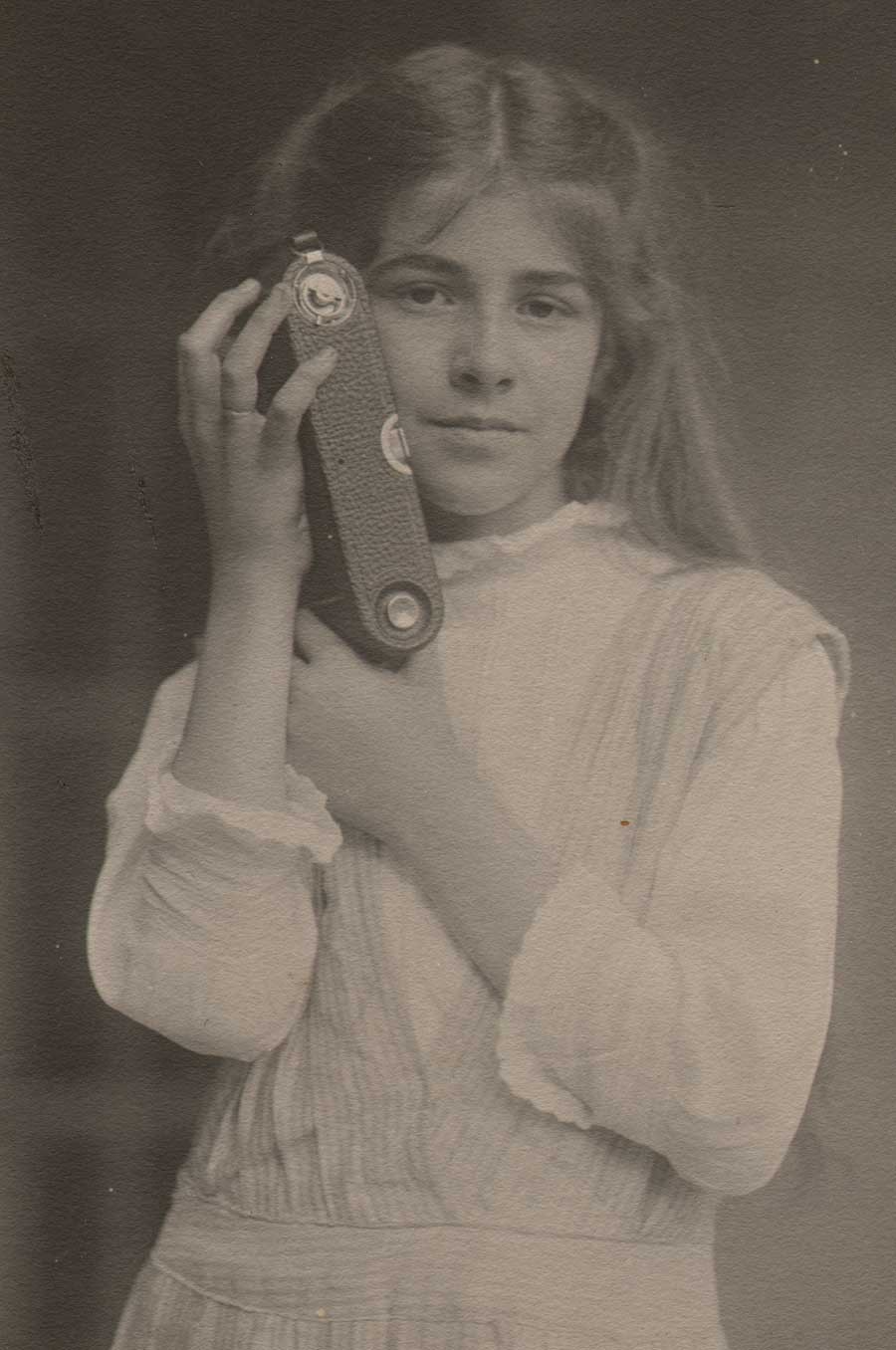It’s been ten years since this archive delved into Scottish photography, with our post: The Permanence of Disruption, which looked into the first use of photography on a large scale as the basis for a painting.
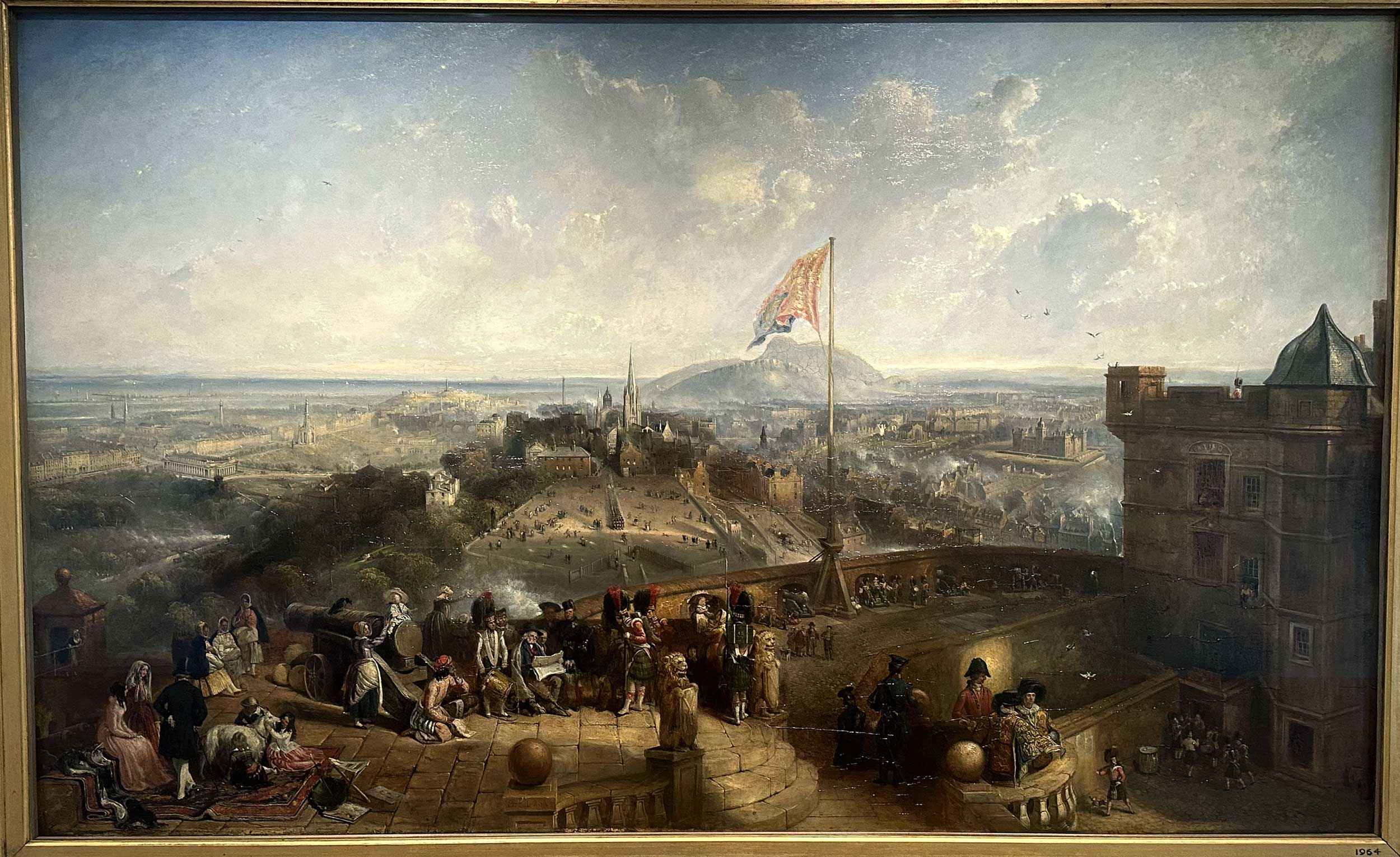
David Octavius Hill: Scotland (1802-70) “Edinburgh Old and New”, oil on panel, about 1846-7: The National Galleries of Scotland. This work shows the expanse of Edinburgh looking down from the perspective of Edinburgh Castle overlooking the city. Curators state that photography was central to the panoramic effect achieved in the work: “Hill was a pioneer of photography, with his associate Robert Adamson (1821-1848). He used their experiments with this new technology to inform several aspects of the painting. To achieve the panoramic effect, he merged a series of photographic views taken from the Mons Meg Battery of Edinburgh Castle.”
The artist of this work, David Octavius Hill, (1802-70) Secretary of the Royal Scottish Academy of Fine Arts in Edinburgh, used hundreds of portraits done in partnership with his employee, the calotype photographer Robert Adamson, a chemist born in St. Andrews, (1821-1848) as the basis for his 1843 “Disruption” painting.
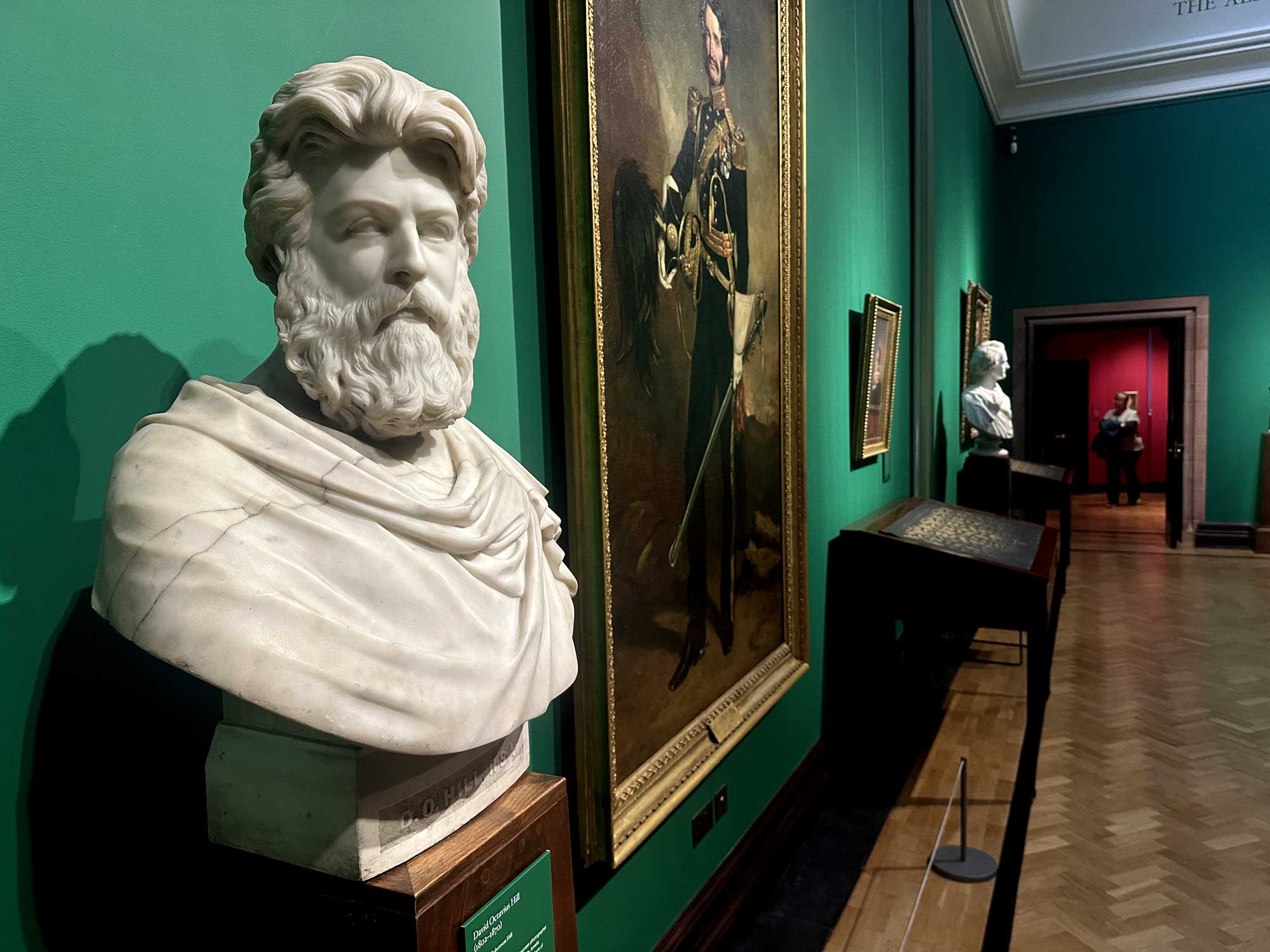
In 1868 this marble “heroic” portrait bust of pioneering Scottish artist and photographer David Octavius Hill (1802-70) was executed in marble by the artist’s second wife Amelia Robertson Hill. Its shown here at the National Galleries of Scotland Portrait Gallery as part of the exhibit: “HEROES & HEROINES – IDEALISM AND ACHIEVEMENT IN THE VICTORIAN AGE”. Photo by David Spencer for PhotoSeed Archive
Taking 23 years to complete, the work marked the occasion of Scottish religious free will: the schism known as the Disruption, which took place at Edinburgh’s Tanfield Hall in 1843. This is when the First General Assembly of the Free Church of Scotland signed the Act of Separation and Deed of Demission from the Church of Scotland.
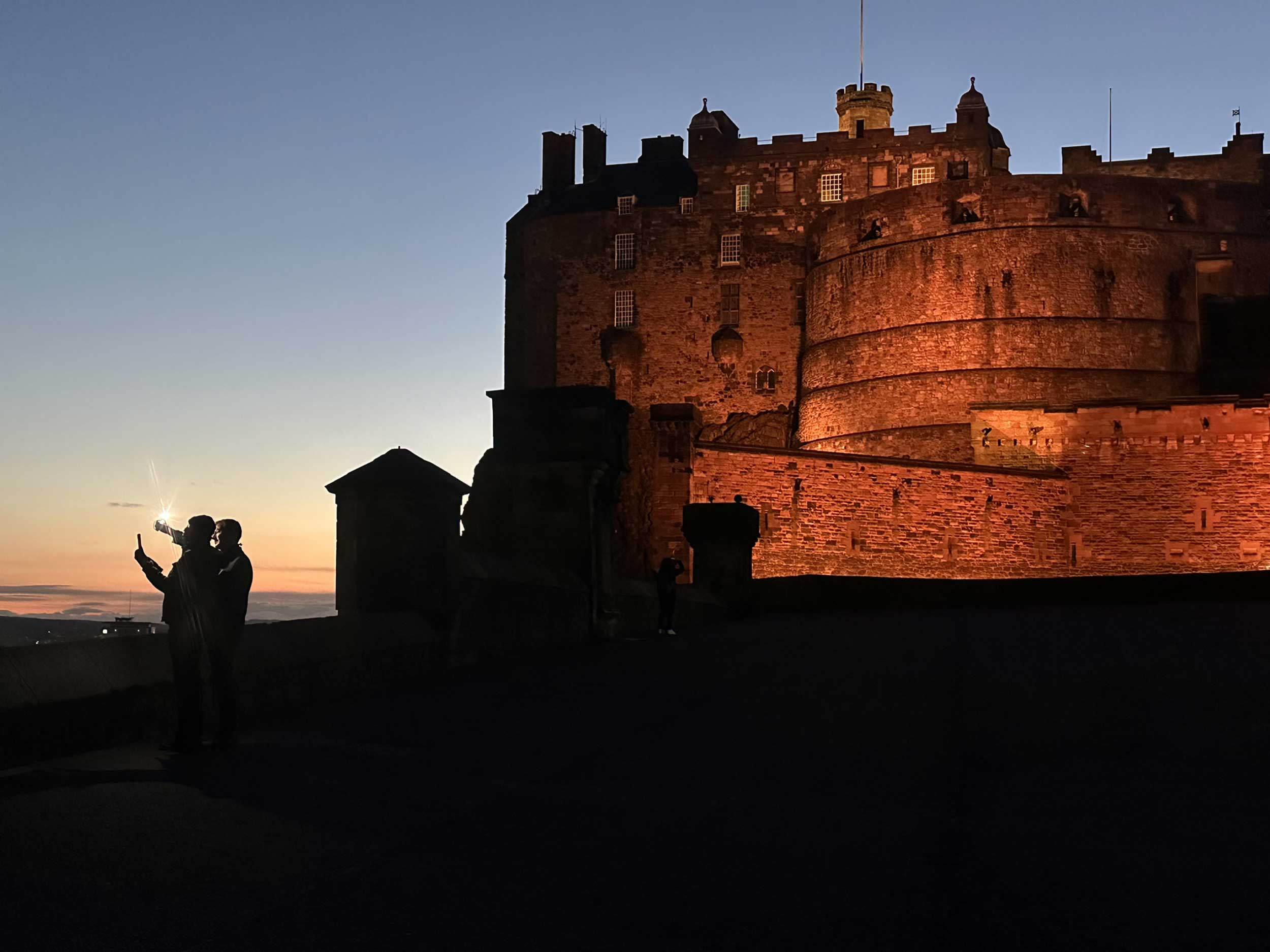
At sunset, visitors photograph themselves in front of the light-washed Edinburgh Castle, a popular tourist attraction in the city’s Old Town section, which dates back to the 11th Century. Located 260 ft above its surrounding landscape, this Castle Rock edifice can claim to have been “the most besieged place in Great Britain and one of the most attacked in the world”- and it is certainly one of the most photographed landmarks in Scotland. Photo taken in October, 2024 by David Spencer for PhotoSeed Archive.
The occasion for this post? A long overdue visit to where this painting was executed- Edinburgh, Scotland, with a day-long tour of the Scottish Highlands rounding out my visit: a week that included quality time with my aunt- my late father’s kid sister- outside Newcastle.
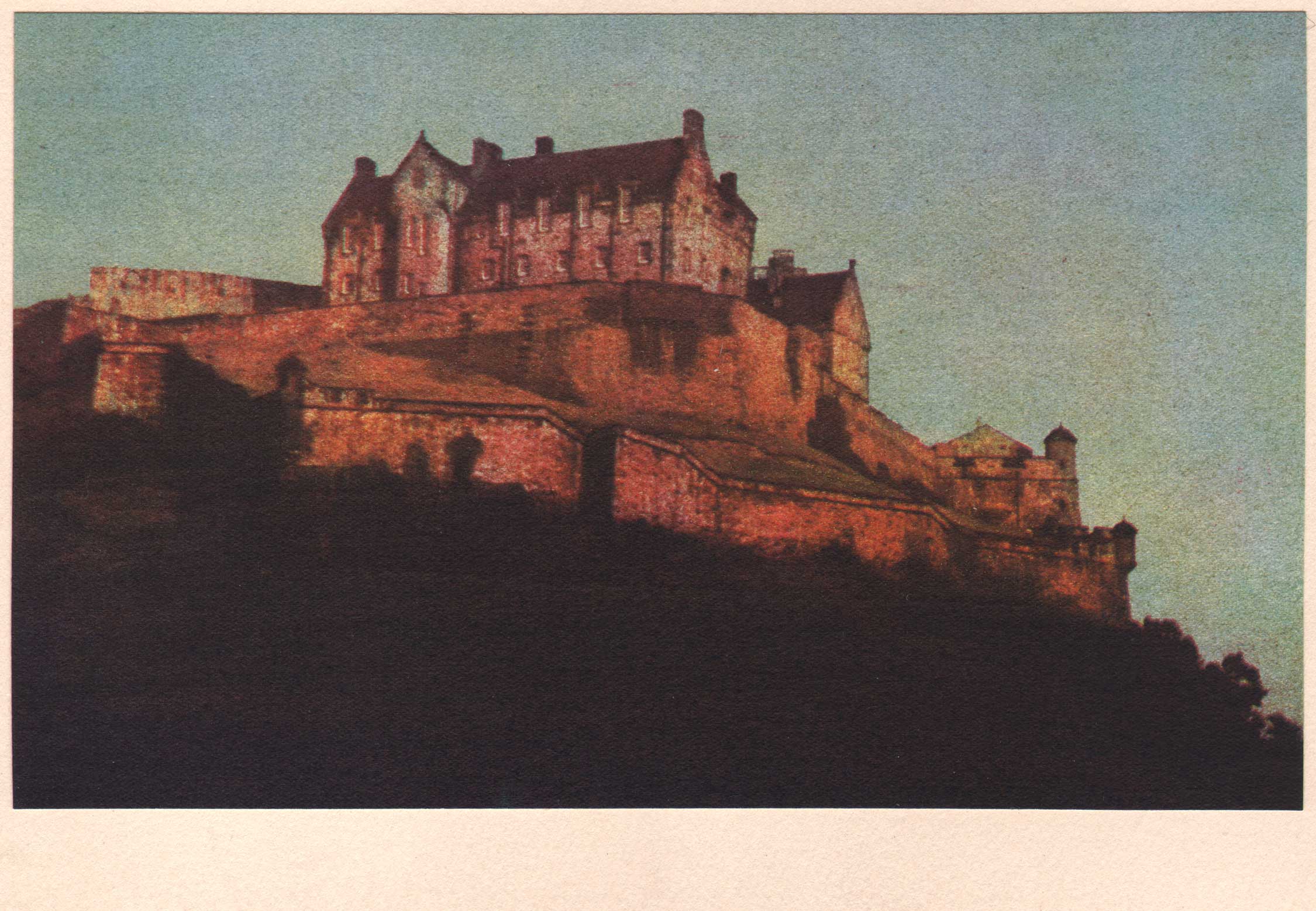
“Edinburgh Castle”, by John Bell, English: 1920-64. Print ca. 1960-64. Trichrome gum bichromate print: 13.5 x 22.1 cm on irregular manila card mount 18.9 x 28.1 cm. Bell, made a Fellow of the Royal Photographic Society in 1956, was an active member of the Lancashire and Cheshire Photographic Union representing the Blackburn Camera Club, Accrington. His obituary stated he became interested in pictorial photography in his 20s, but died tragically young, the victim of an automobile accident while stopping to save others involved in a collision while in route to London. From: PhotoSeed Archive
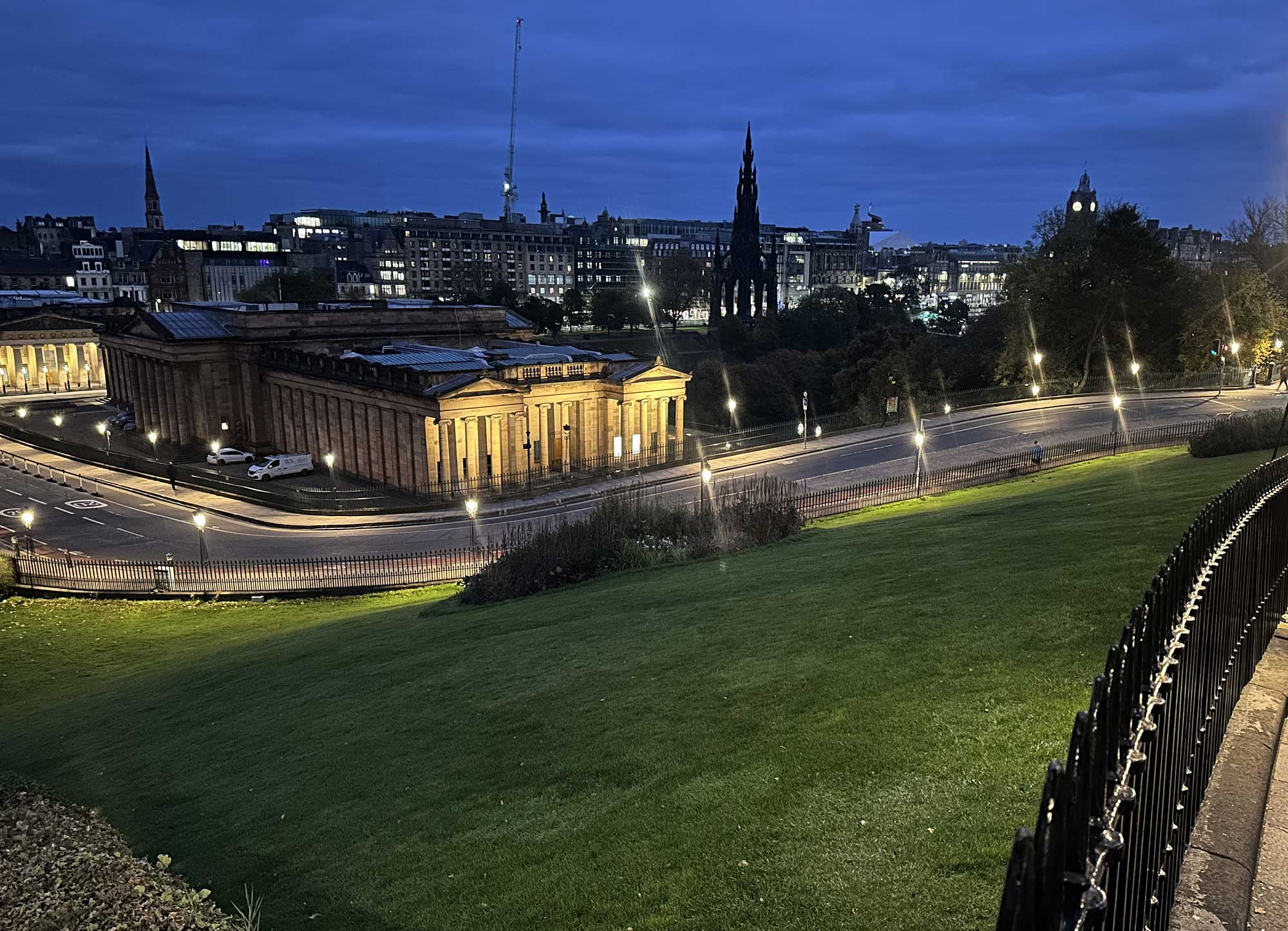
Photograph of Edinburgh, Scotland at Dusk taken from the Mound. Shown illuminated in foreground is the National Galleries of Art building, with the Burns monument silhouetted at background right. Photo taken in October, 2024 by David Spencer for PhotoSeed Archive.
The last time I visited Scotland was more than 40 years ago- a memorable Glasgow visit with fellow University photography students. Camera always in hand, I seem to remember my young deluded self becoming rapturous while taking photographs of a skeleton smoking a cigarette displayed by students at the Glasgow School of Art for some kind of exhibition, as well as visiting the original Willow Tearooms, designed by famed architect Charles Rennie Mackintosh, then newly refurbished in 1983, the year I visited.
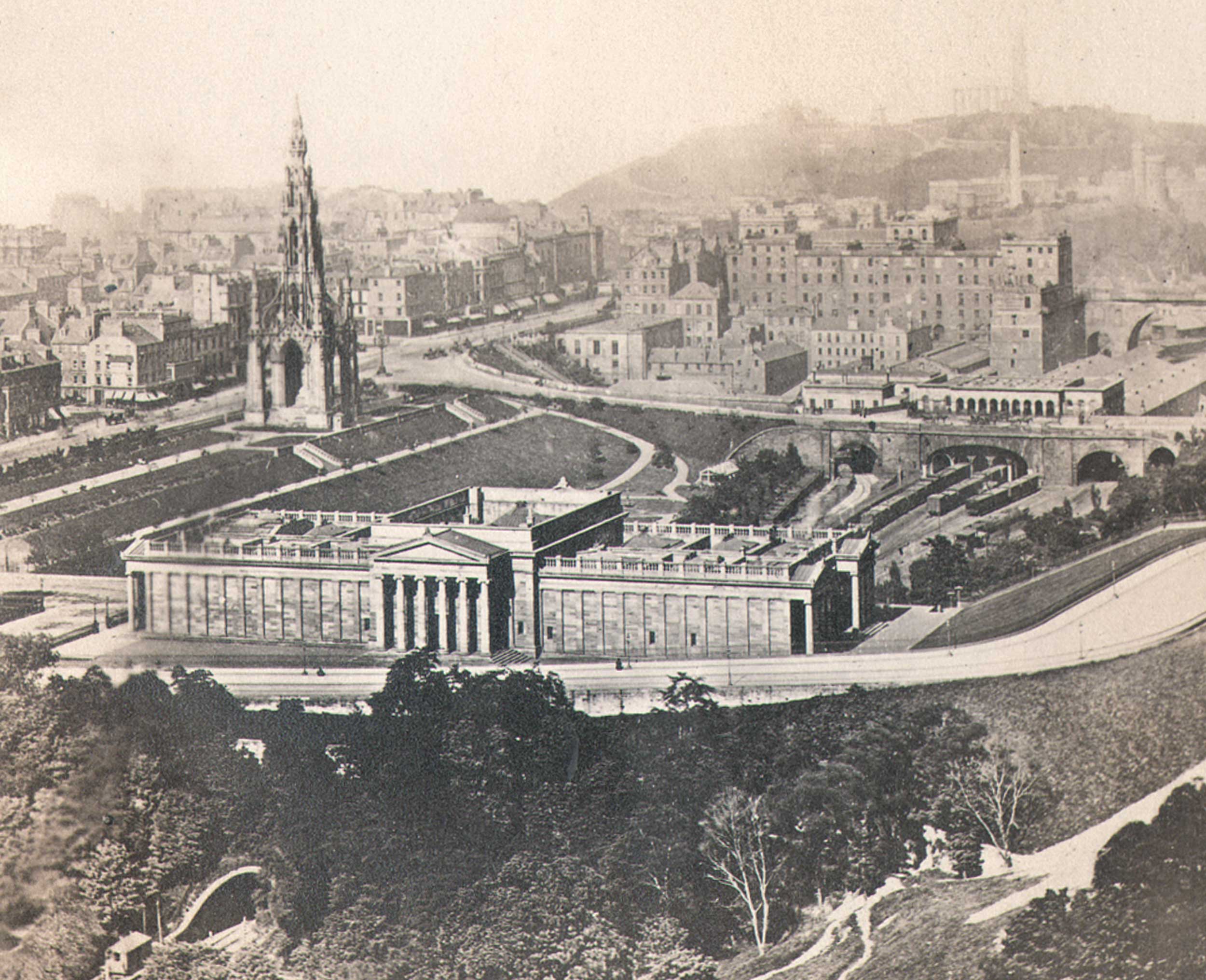
“City of Edinburgh”, Thomas Annan, Scottish, 1829-1887. Albumen print: 8.0 x 8.3 cm, pasted on leaf: 18.6 x 14.9 cm. Included as plate in 1866 volume: Marmion: A Tale of Flodden Field, by Sir Walter Scott, Bart. London: A.W. Bennett. Photographed from Edinburgh Castle, this view shows the current National Galleries of Scotland main building in foreground. At far left is Princes Street, with the Scott Memorial at left background and Waverly train station directly behind the National building. From: PhotoSeed Archive
But this time, a thorough exploration of Scotland’s capital, Edinburgh, as well as the Scottish Highlands, were in store. With the magisterial Edinburgh Castle, located high atop Castle Rock, seemingly looming over all of the capital, it soon became evident this city would put San Francisco to shame in the department of hilly streets. So with my wife’s bemusement and a bit of whimpering on my part, a massive amount of rocky stair climbing would soon become part of our daily routine as we explored the city’s Old Town neighborhoods in particular.

Left: “Sir Walter Scott’s Monument”, George Washington Wilson, Scottish, 1823-1893. Albumen print: 10.2 x 7.8 cm, pasted to ruled and titled leaf: 21.9 x 17.9 cm. Shown from the perspective of Princes St. in Edinburgh, this plate was included in the 1866 volume: Photographs of English and Scottish Scenery, by G.W. Wilson, Aberdeen: Edinburgh. 12 Views. London: A. Marion, Son, & Co. From: PhotoSeed Archive. Right: A bicyclist makes his way along Princes Street tram tracks, with the soaring Scott Memorial monument in background. Designed by George Kemp, the foundation of the monument was laid in August, 1840 and completed in 1844. A large marble statue of Scott, seated, along with his favorite dog Bevis, are underneath the monuments canopy. Photo taken in October, 2024 by David Spencer for PhotoSeed Archive.
The first order of business in Edinburgh was to pay a visit, in person, to see the “Disruption” painting by Hill. I had tried to do basic research before the trip- where it was displayed, etc. but did not really have specific details, other than an address on “The Mound”, located on the periphery of the city’s medieval Old Town.
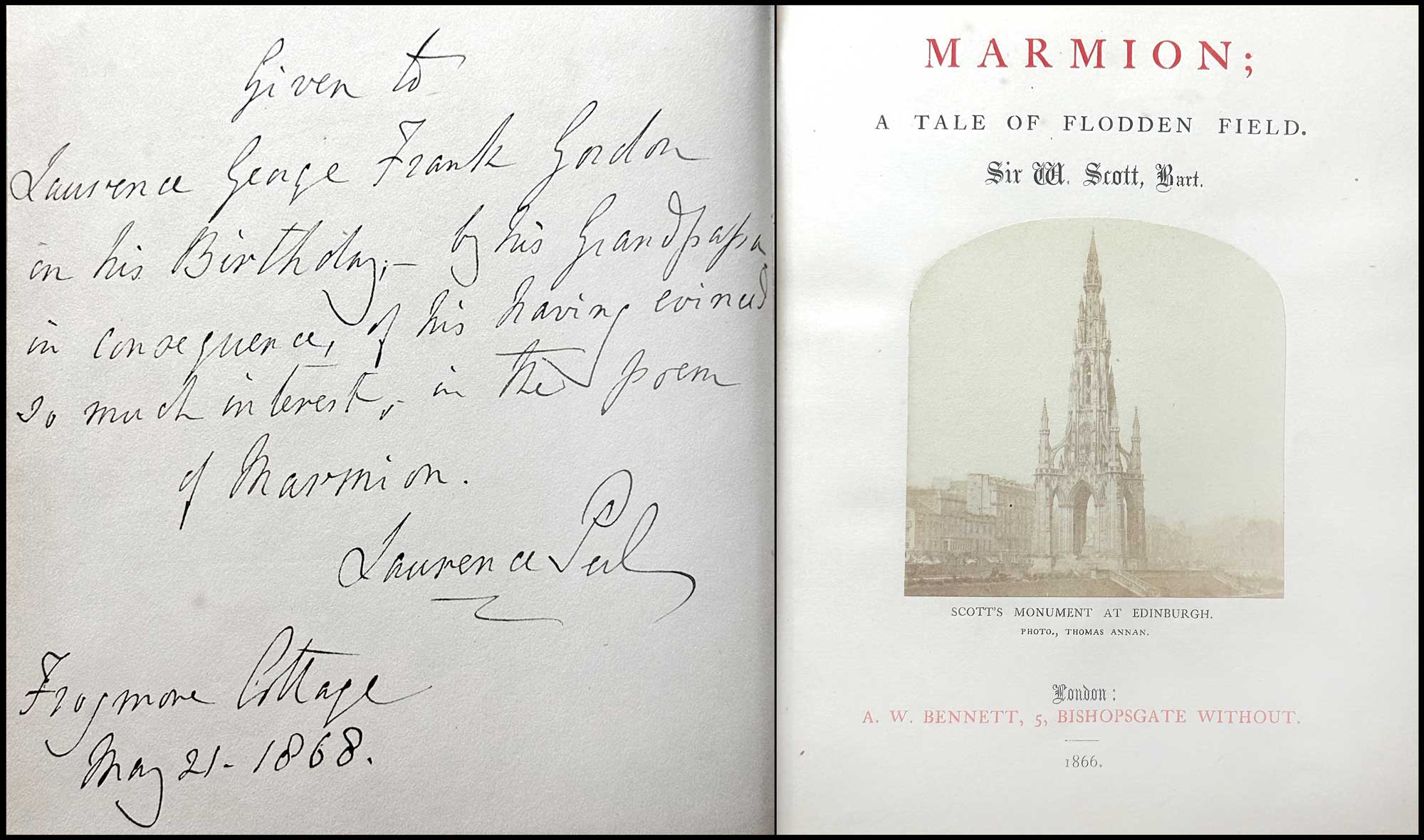
Left: Endpage inscription: “Given to Laurence George Frank Gordon (1864-1943) on his Birthday- by his Grandpapa in consequence of his having evinced (?) so much interest in the poem of Marmion.” Signed? Frogmore Cottage May 21, 1868. Contained within volume: Right: title page: Marmion: A Tale of Flodden Field, by Sir Walter Scott, Bart. London: A.W. Bennett, 1866. With pasted arched-top albumen print photograph of Scott’s Monument at Edinburgh by Thomas Annan, Scottish, 1829-1887. 8.1 x 8.1 cm, pasted on leaf: 18.6 x 14.9 cm. From: PhotoSeed Archive
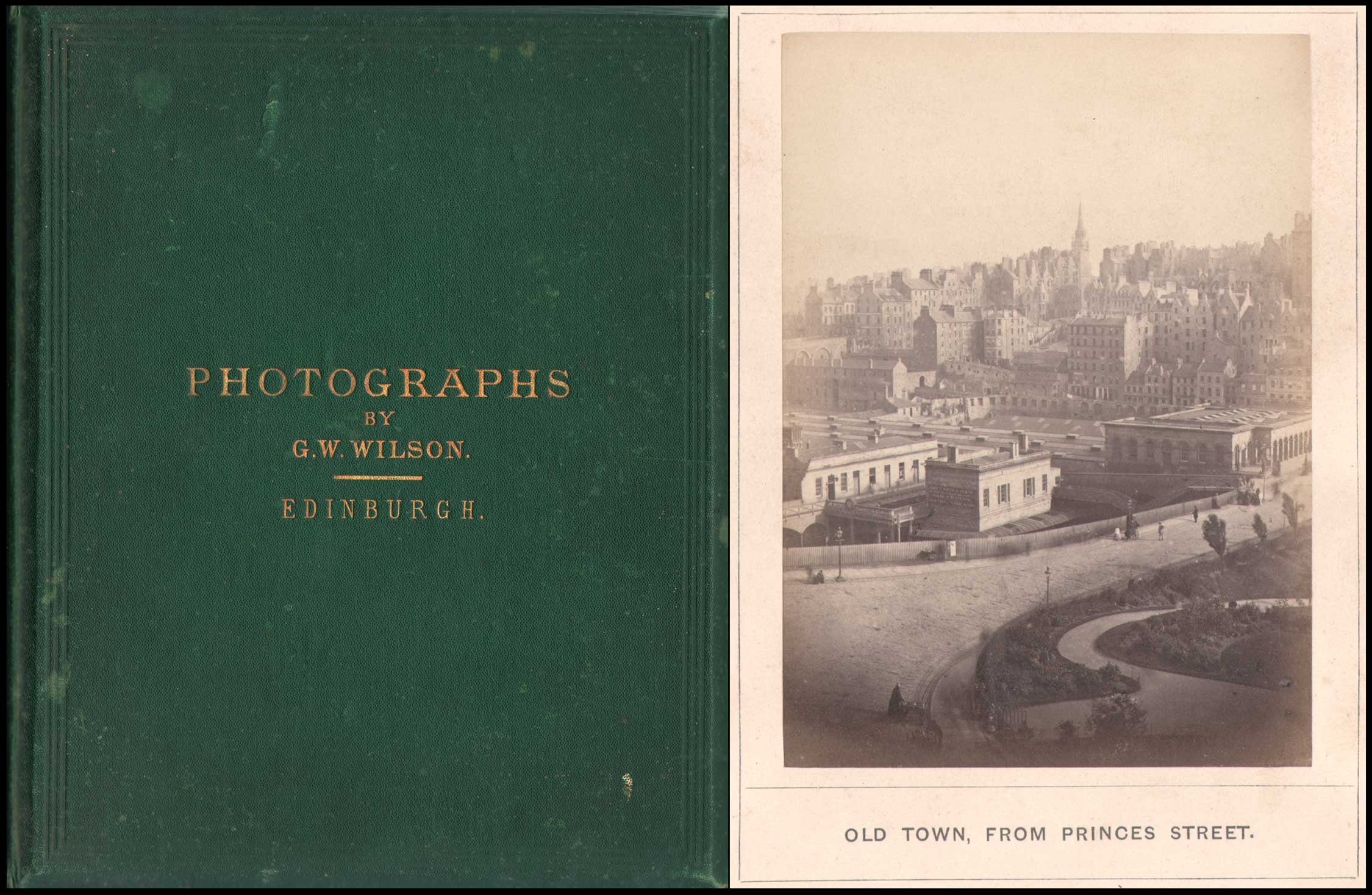
Left: Volume Cover: stamped: PHOTOGRAPHS By G.W. Wilson. EDINBURGH. from volume: “Photographs of English and Scottish Scenery, by G.W. Wilson, Aberdeen: Edinburgh. 12 Views.” 1866: London: A. Marion, Son, & Co. Right: “Old Town, From Princes Street”, albumen print: 10.7 x 7.8 cm, pasted to ruled and titled leaf: 21.9 x 17.9 cm. The individual plates in the volume are accompanied by a descriptive letterpress leaf. This particular example: THE OLD TOWN, From Princes Street. “The Old Town of Edinburgh presents many rare and valuable objects of interest to every true Scotchman. High Street, its principal thoroughfare, (Known as the Royal Mile-editor) extends from the Castle to Holyrood, and is replete with historical associations of times gone by.”…From: PhotoSeed Archive
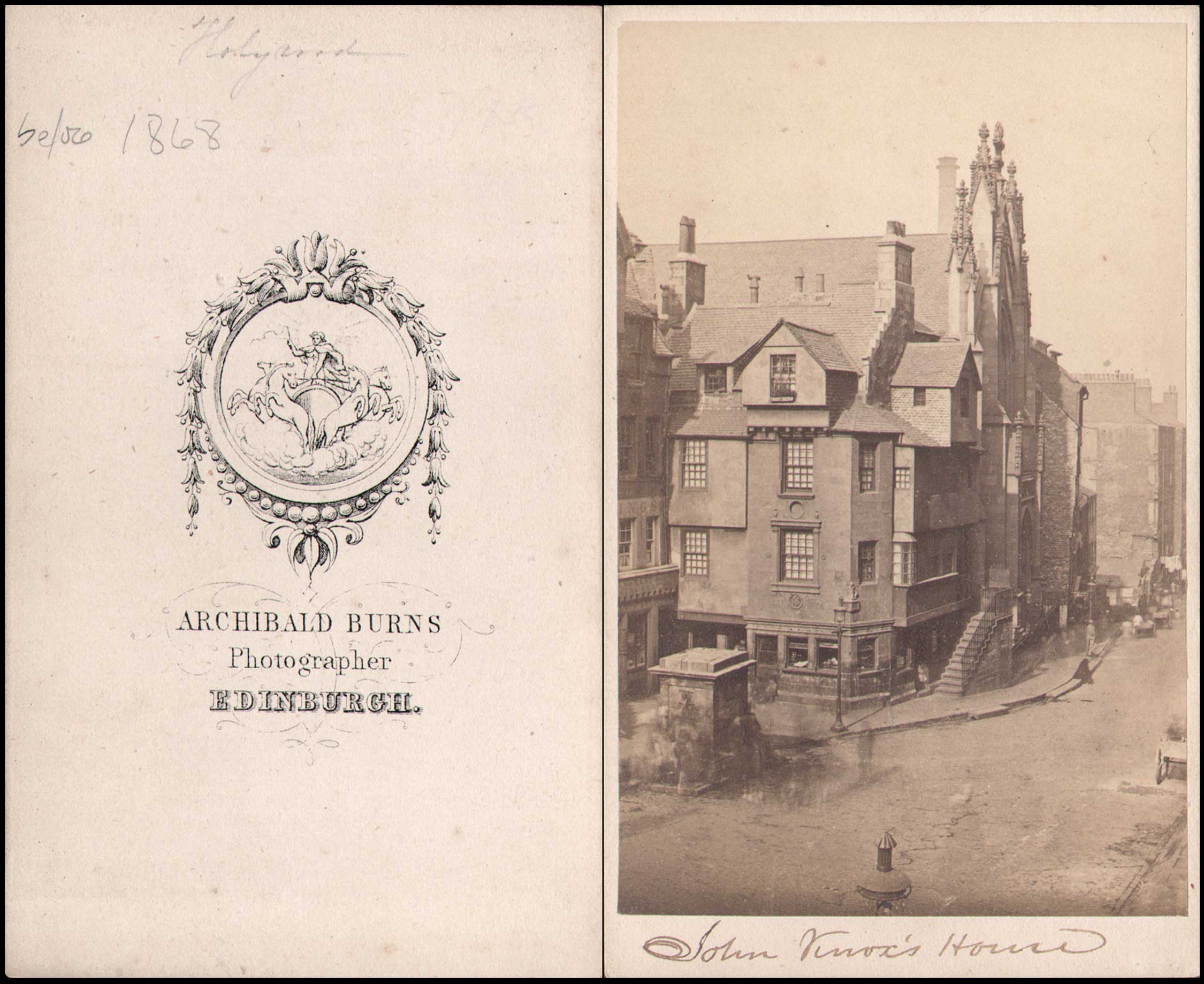
Left: Carte de visite (cdv) backstamp: Archibald Burns Photographer Edinburgh. 10.3 x 6.4 cm. Right: “John Knox’s House”, Archibald Burns, Scotland: (1831-1880) Albumen print, ca. 1868: 9.4 x 6.0 cm pasted to mount 10.3 x 6.4 cm. Still standing today and built from 1490 onwards, Wikipedia states the home was “reputed to have been owned and lived in by Protestant reformer John Knox during the 16th century. Although his name became associated with the house, he appears to have lived in Warriston Close where a plaque indicates the approximate site of his actual residence.” John Knox: c. 1514- 1572. Both from: PhotoSeed Archive
Speaking into an intercom at that address, which turned out to be the Edinburgh Theological Seminary, I lucked out. Explaining my interest in seeing the painting by Hill, a lovely employee- Fiona- a painter herself as I recall-asked if we had an appointment, to which stammering and ignorance ensued on my end. But the planets aligned-no meetings were then being held in Presbytery Hall- where the painting was permanently displayed, and buzzing my wife and I up, she gave an unrushed, personal tour of the painting and the room it was displayed in.
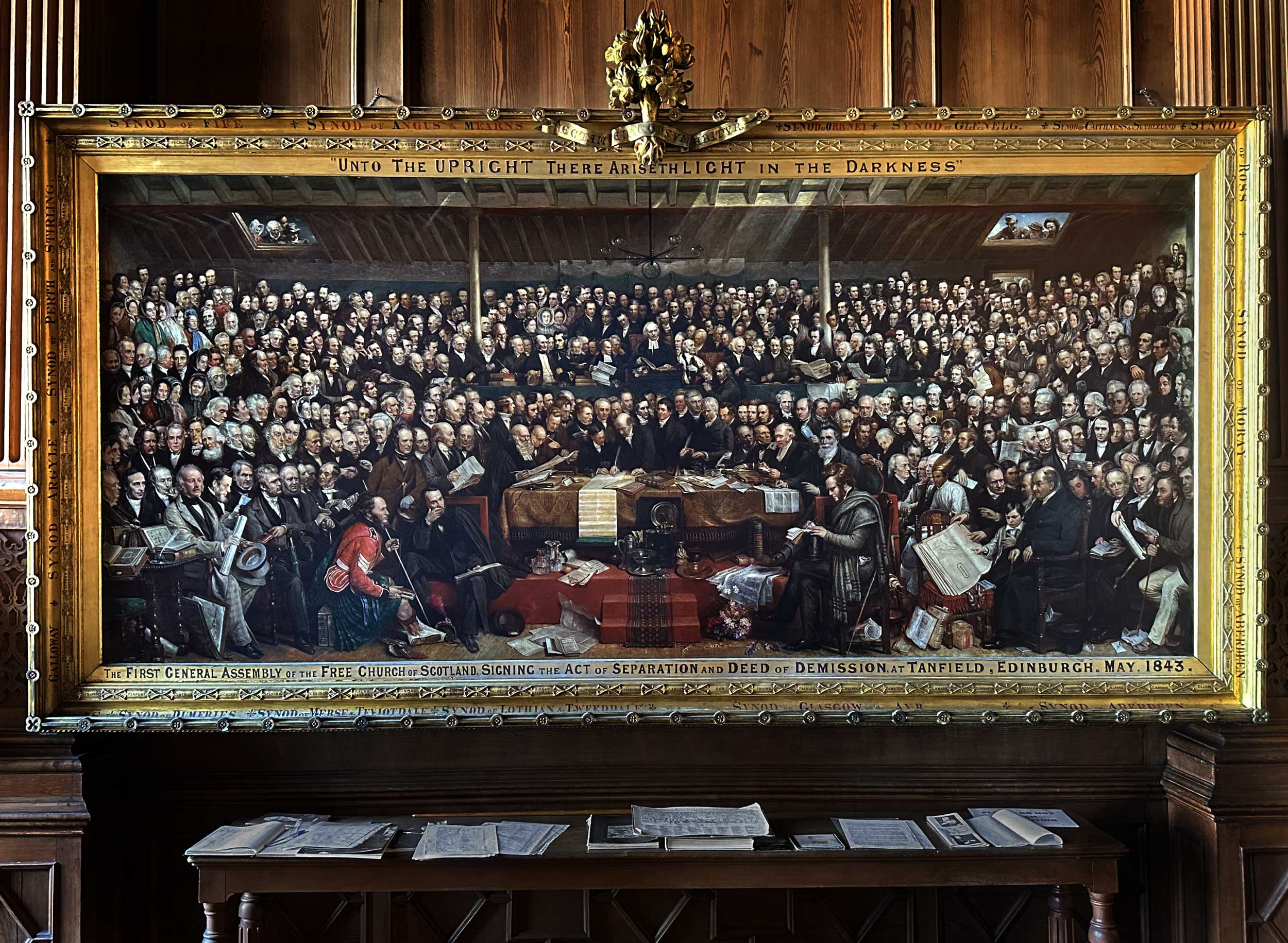
Known as the “Disruption” painting and owned by the Free Church of Scotland, this massive painting (Oil on canvas, 154 × 347 cm) was executed by the Scottish artist and photographer David Octavius Hill between 1843-66. It commemorates the gathering of the First General Assembly of the Free Church of Scotland signing the Act of Separation and Deed of Demission from the Church of Scotland in May of 1843. On permanent display in Presbytery Hall at Edinburgh Theological Seminary, it depicts 457 people of the approximately 1500 present on May 23rd of that year-many who later sat for their photographic portraits by the team of Hill and his partner Robert Adamson- photographs used as the basis by Hill for this Disruption painting- historically significant as the first large scale use of photography for the basis of a painting. Complete name of work: “The First General Assembly of the Free Church of Scotland; Signing the Act of Separation and Deed of Demission at Tanfield, Edinburgh, 23 May 1843.” Photo of Disruption painting taken in October, 2024 by David Spencer for PhotoSeed Archive.
After befuddled coffee ordering- the “Americano” seems to approximate Dunkin’, but without the cream and sugar- the highlight of one full morning in Edinburgh was a visit to the “National”, the main gallery building of the National Galleries of Scotland. It’s located near Princess Street Gardens, and directly over the underground railroad tracks for nearby Waverly Station. (an 1866 photograph by Thomas Annan showing the building can be seen with this post)
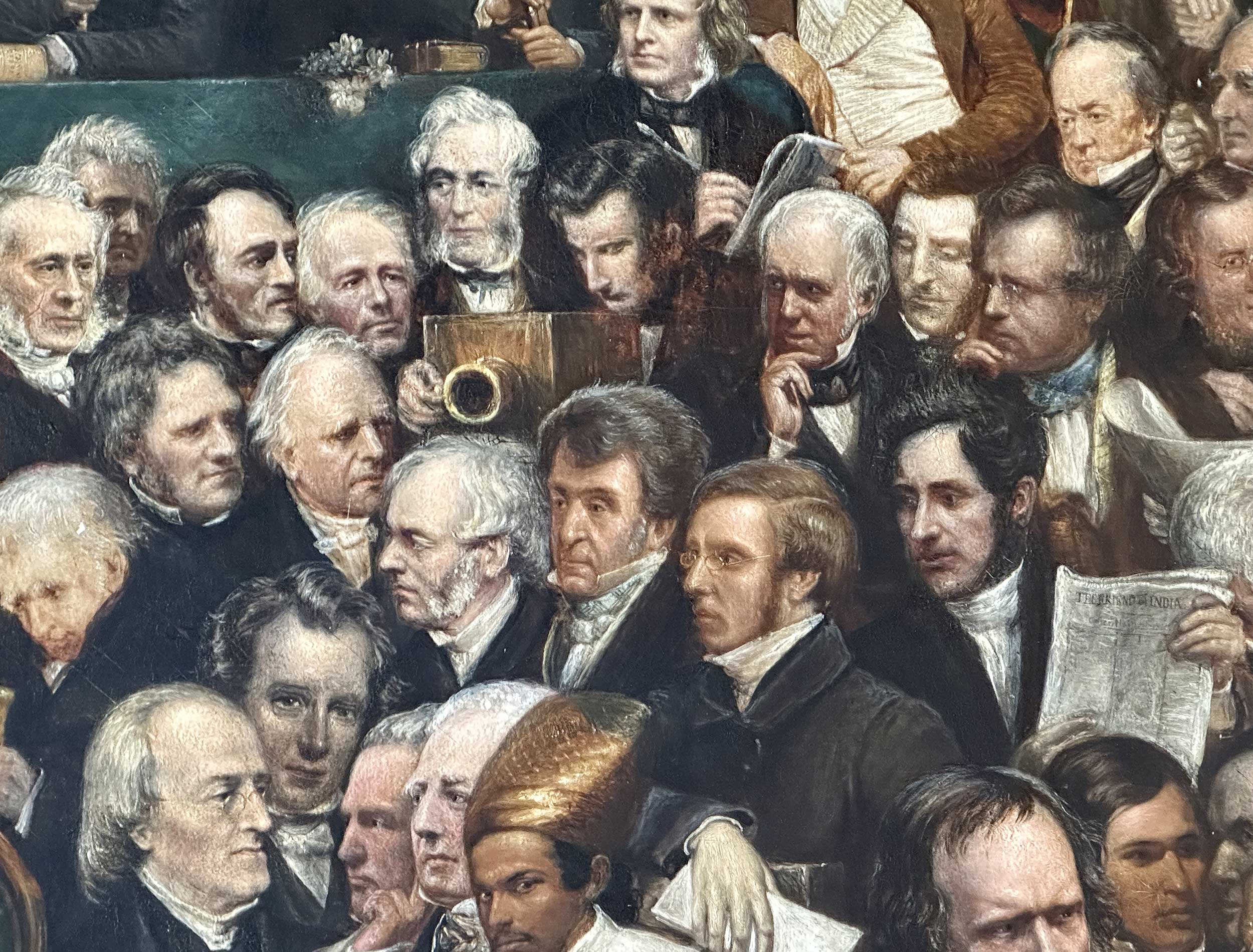
In this detail of the “Disruption” painting by David Octavius Hill, the photographer Robert Adamson (1821-1848) is seen at center of composition focusing his wooden box camera towards ministers and others who are standing at a central table (not shown) while signing the deed of demission. Directly above Adamson is the artist Hill holding his quill and a sketch pad. In reality, Hill the artist was in attendance for the signing but Adamson was not. Only later upon the suggestion of David Brewster did Hill hire Adamson for the task of taking hundreds of portraits- both individually and in groups, which formed the basis of the painting. The fact Hill painted Adamson into the painting later after he died in 1848 is a great tribute to his friend and an acknowledgment of the role of photography had in the work’s creation. Photo of Disruption painting taken October, 2024 by David Spencer for PhotoSeed Archive.
Free, this is a world-class museum showcasing International and Scottish art from 1300-1945, and I was delighted to encounter an original oil painting done by David Octavius Hill ca. 1846-47. Titled “Edinburgh Old and New”, the work shows the expanse of Edinburgh looking down from the castle.
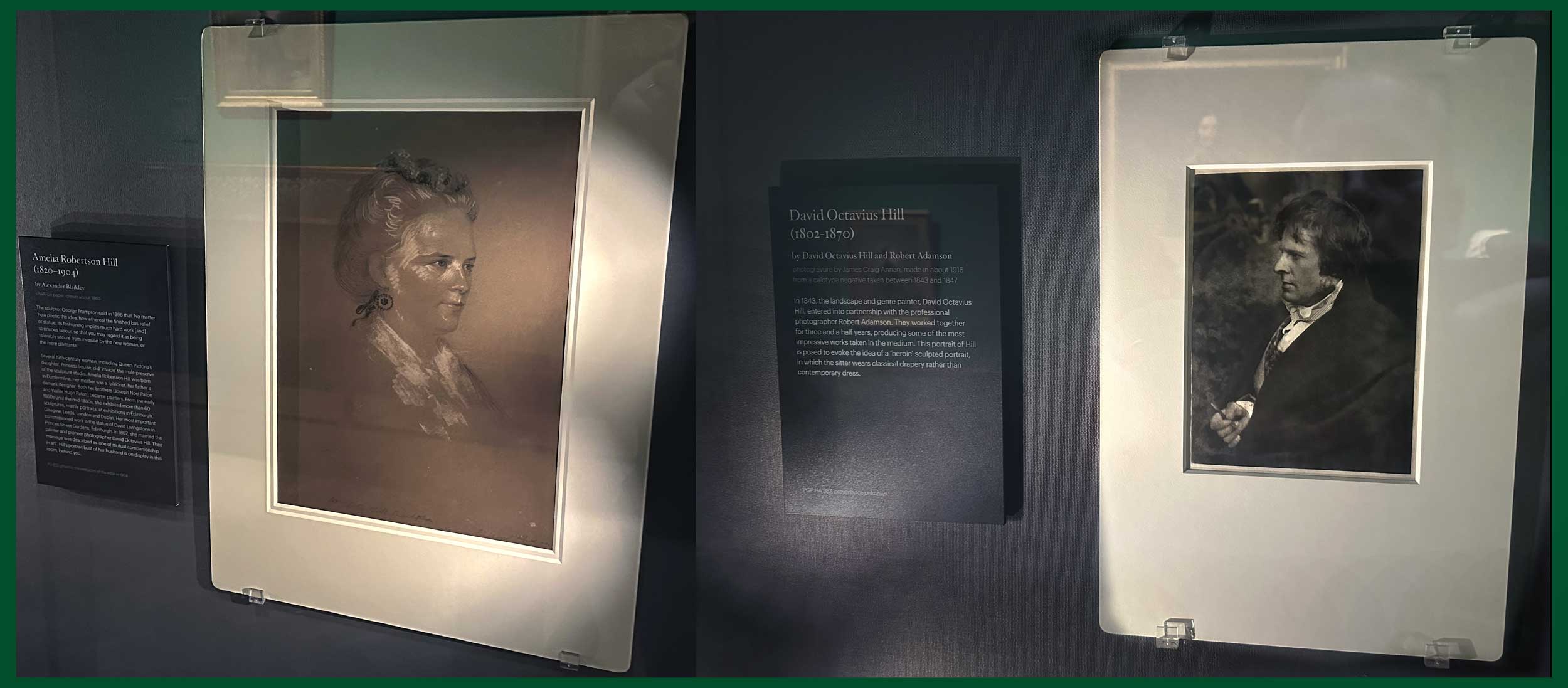
Left: A chalk on paper portrait of sculptress Amelia Robertson Hill, (1820-1904) by Alexander Blaikley on display at the National Galleries of Scotland Portrait Gallery. The second wife of artist/photographer David Octavius Hill, her initials appear on the frame of the “Disruption” painting along with her husbands signature, showing her late-stage involvement in getting the work completed. Curators include the following commentary: “From the early 1860s until the mid-1880s, she exhibited more than 60 sculptures, mainly portraits, at exhibitions in Edinburgh, Glasgow, Leeds, London and Dublin. Her most important commissioned work is the statue of David Livingstone in Princes Street Gardens, Edinburgh. In 1862, she married the painter and pioneer photographer David Octavius Hill. Their marriage was described as one of mutual companionship in art.” Right: A later photogravure (ca. 1916) by James Craig Annan from a calotype negative (ca. 1843-47) of the landscape, genre painter and photographer David Octavius Hill. (1802-1870) Combined photos taken in October, 2024 by David Spencer for PhotoSeed Archive.
I’ve used a photo of the painting as the first picture in this post. Curators at the National helpfully include on the informational wall descriptor that photography was central to the panoramic effect achieved in the work: “Hill was a pioneer of photography, with his associate Robert Adamson (1821-1848). He used their experiments with this new technology to inform several aspects of the painting. To achieve the panoramic effect, he merged a series of photographic views taken from the Mons Meg Battery of Edinburgh Castle.”
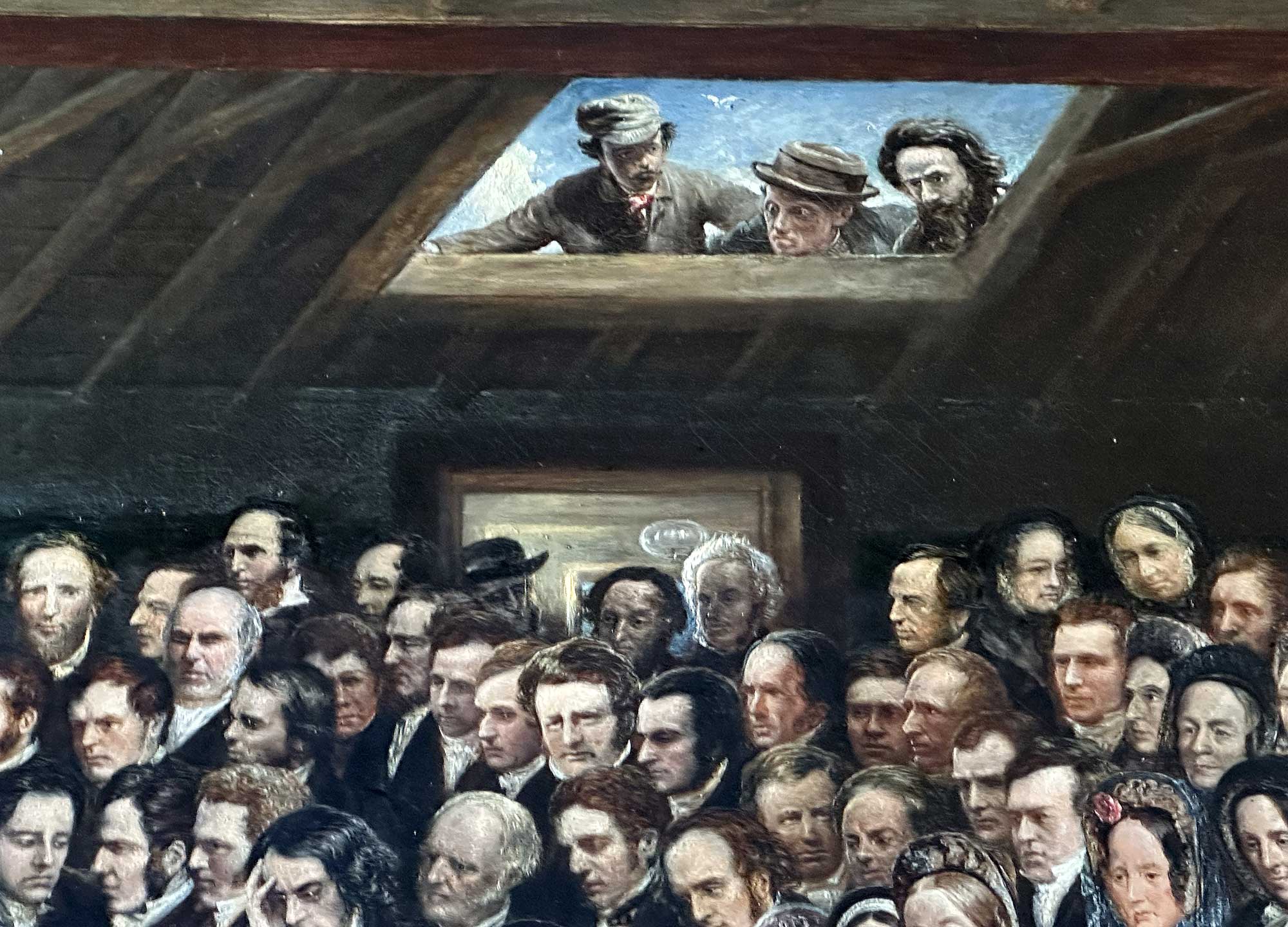
In this detail of the “Disruption” painting by David Octavius Hill, the massive amount of public interest in the de-coupling from the Church of Scotland at Tanfield Hall where the signing of the Act of Separation and Deed of Demission took place is represented by these spectators peering down from an open skylight. In a later “key” to those present in the painting, drawn up by Hill in 1866 and held by the National Galleries of Scotland, these souls looking down are unnamed. Interestingly, an updated engraved key done around 1868 shows an additional figure drawn in (later painted) at the far left of the open doorway below the skylight. Its been inferred this added figure is photographer Thomas Annan, who in 1868 copied the Disruption painting and made carbon photographic enlargements that year. Photo of Disruption painting taken in October, 2024 by David Spencer for PhotoSeed Archive.
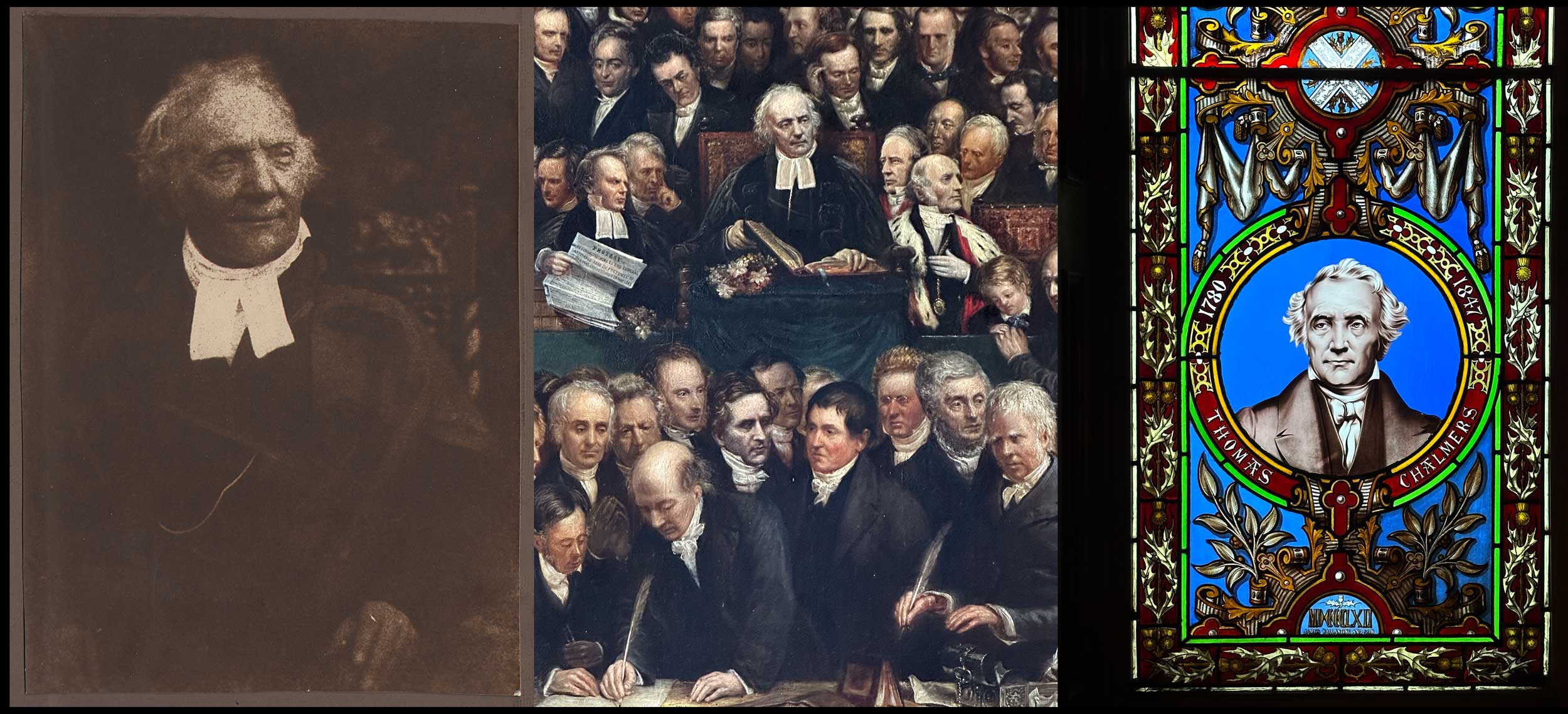
Triptych of the Rev. Dr. Thomas Chalmers: (1780-1847) minister, social reformer, leader & first Moderator of the Free Church of Scotland Assembly, Principal of New College, Edinburgh: Left: Pasted carbon print: ca. 1916: 15.2 x 11.1 cm: Jesse Bertram: after original ca. 1843 calotype by Hill & Adamson. (PhotoSeed Archive) Middle: Detail of Chalmers at top with open book moderating assembly- part of “Disruption” painting by David Octavius Hill- work executed 1843-66. Right: Stained glass panel of Thomas Chalmers, signed 1862 by James Ballantine and Son: part of a larger window depicting 12 church pioneers (including early reformer John Knox and Henry Moncreiff-Wellwood, a baronet and minister in the Church of Scotland) on display in Presbytery Hall opposite the “Disruption” painting at Edinburgh Theological Seminary, the Mound. Composite photographs by David Spencer for PhotoSeed Archive.
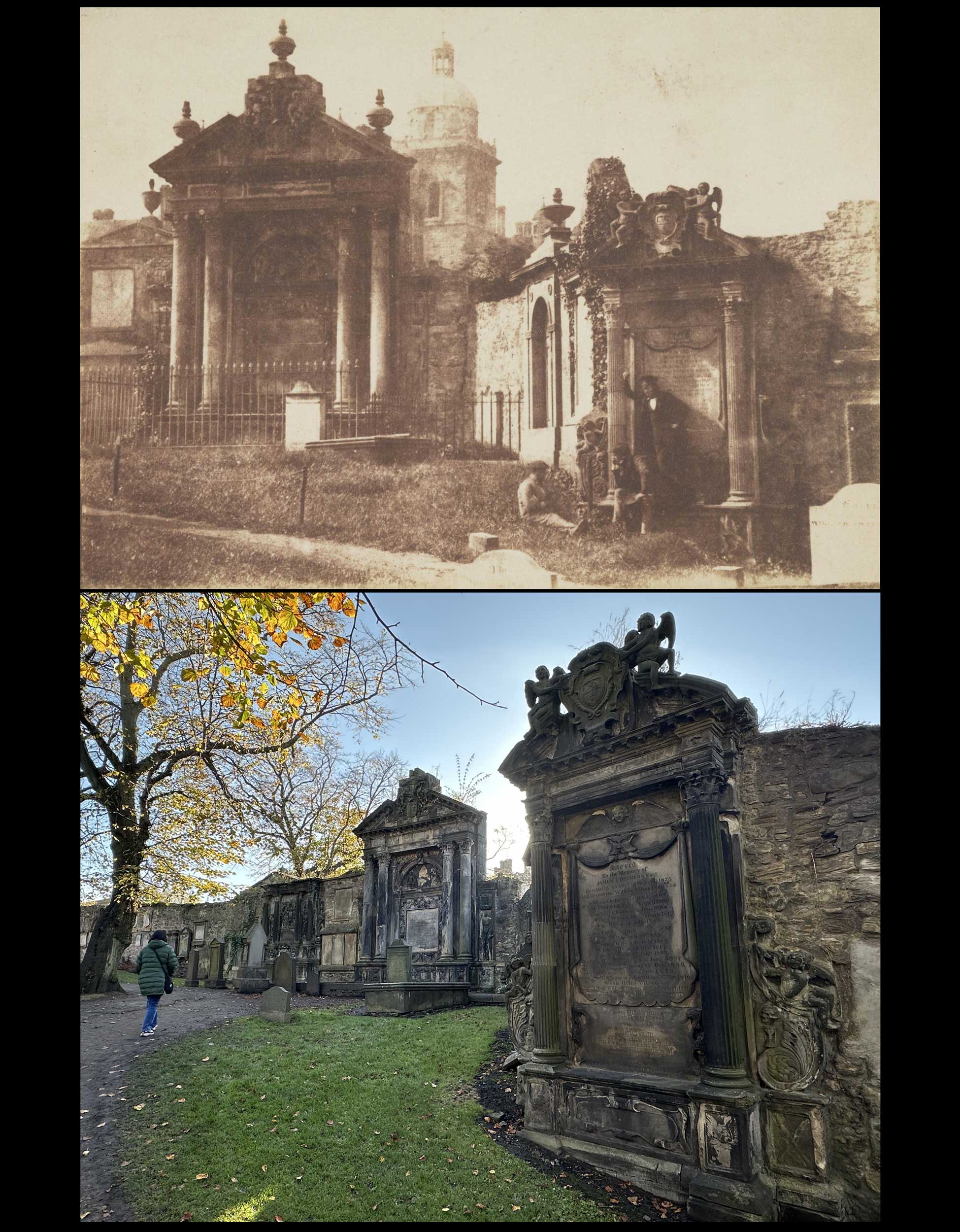
Top: “Greyfriars’ Churchyard, a group of monuments including the Paton and Chalmers Monuments, with Heriot’s Hospital in the Background.” David Octavius Hill, Scottish: 1802-1870 & Robert Adamson, Scottish: 1821-1848. Salted paper print, 14.50 x 19.80 cm. Accession number: PGP HA 2271. National Galleries of Scotland. Online digital reproduction courtesy National Galleries of Scotland. Bottom: Today, the approximate site showing the two memorials Hill & Adamson photographed in 1843. Greyfriars Kirkyard, a cemetery dating to 1561-62 surrounding Greyfriars Kirk in Edinburgh is a popular tourist attraction. At left is the monument of Elizabeth Paton (wife of John Cunningham) (d. 1676), and the Chalmers monument at right dates to 1675: erected to the memory of James Chalmers Esq. by his son Thomas. Photo taken in October, 2024 by David Spencer for PhotoSeed Archive.
So its nice to learn photography really did inform Hill’s painting, not just in his “Disruption” work. We soon headed over to the National Galleries of Scotland Portrait Gallery, where I had been hopefully informed by a National employee that photography was actually on display. This is not always the case in museums. Knowing Scotland does not have a dedicated national gallery for photography highlighting Scottish achievements, (1.) the Portrait gallery was a good bet.
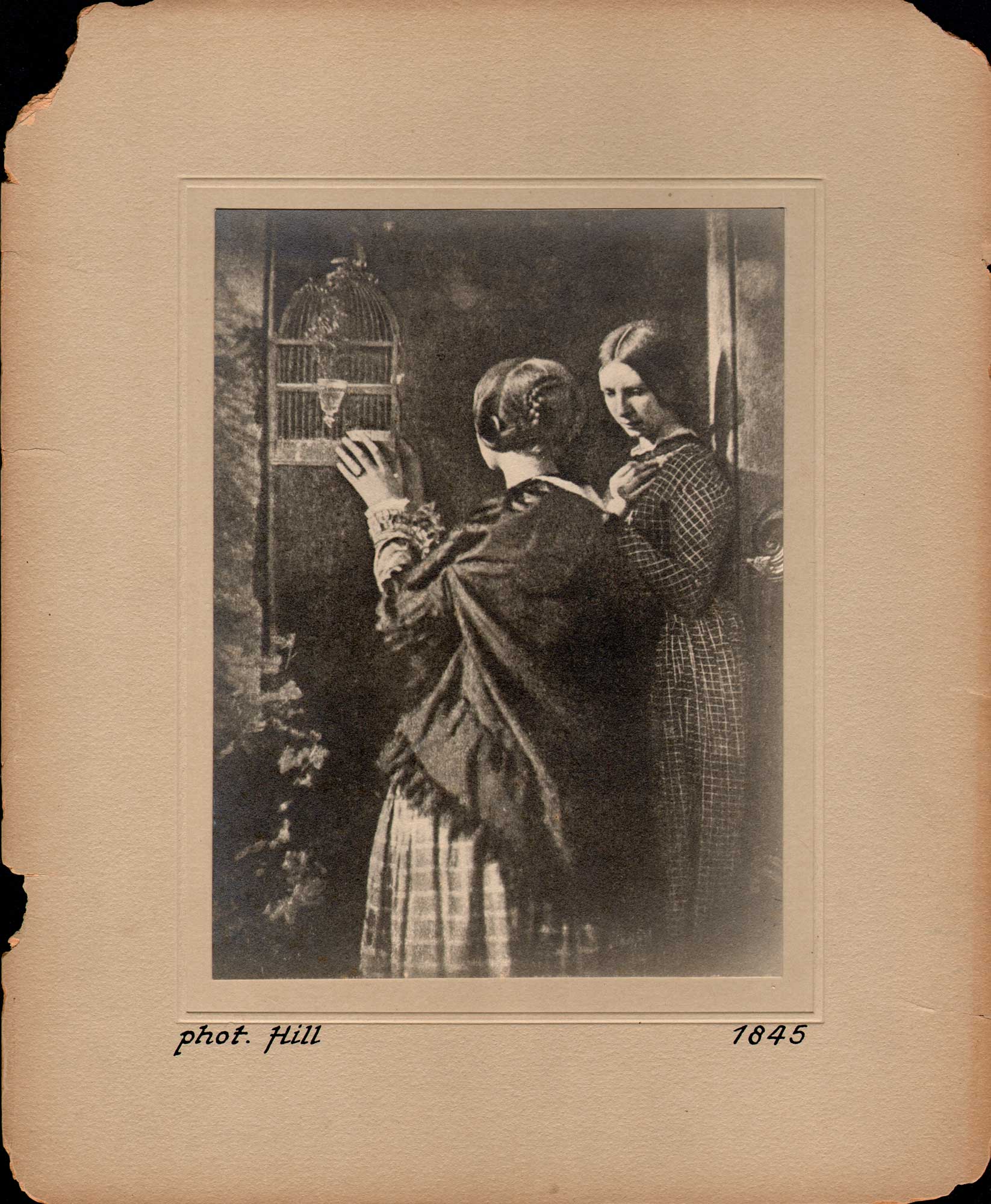
“The Bird Cage”( Misses Watson) David Octavius Hill, Scottish: 1802-1870 & Robert Adamson, Scottish: 1821-1848. Silver bromide print: 22.6 x 16.8 pasted to impressed card mount:35.8 x 29.4 cm. This may be a rare test print made by Scottish photographer James Craig Annan which he later produced as a hand-pulled photogravure and published in Camera Work 28, in 1909. A fine example of genre work produced by the photographic duo. (another example: Harry Ransom Center: Accession Number: 964:0062:0011) From: PhotoSeed Archive
The first wonderful thing I saw, besides many busts of eminent Scotsmen, was a striking marble head of Hugh Miller, (1802-1856) an intellectual of Victorian Scotland whom I recognized from a book photograph taken by Hill & Adamson in my library. Miller was originally a stonemason who went on to be a geologist, pioneering journalist and champion of the Free Church of Scotland. Nearby, the gallery helpfully included in a display case a later carbon print (Jessie Bertram?) of Miller printed from the original 1843 calotype negative.
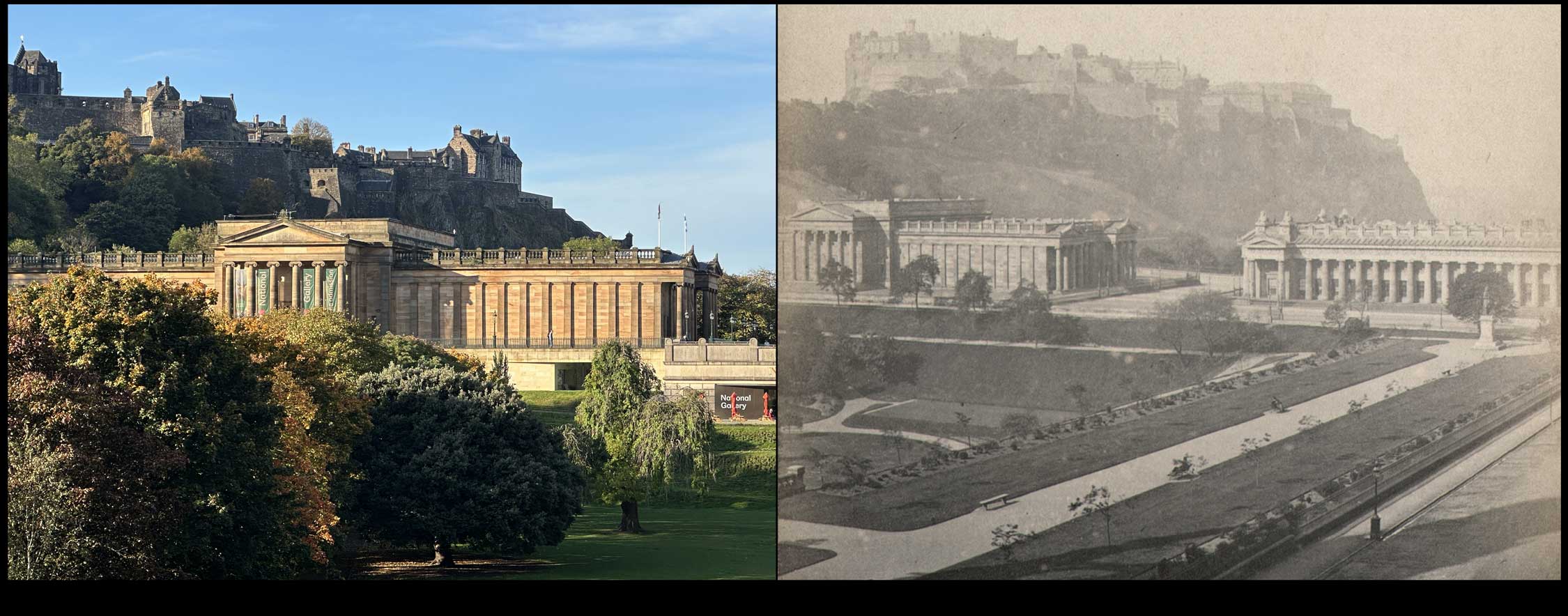
Left: A view of the main building for the National Galleries of Scotland with Princes Street gardens in foreground and Edinburgh Castle in background. Photo taken in October, 2024 by David Spencer for PhotoSeed Archive. Right: Detail: “Edinburgh Castle”, George Washington Wilson, Scottish, 1823-1893. Albumen print: 10.6 x 7.9 cm, pasted to ruled and titled leaf: 21.9 x 17.9 cm. Included with 1866 volume: “Photographs of English and Scottish Scenery, by G.W. Wilson, Aberdeen: Edinburgh. 12 Views.” London: A. Marion, Son, & Co. The main building for the National Gallery is at far left of frame. From: PhotoSeed Archive
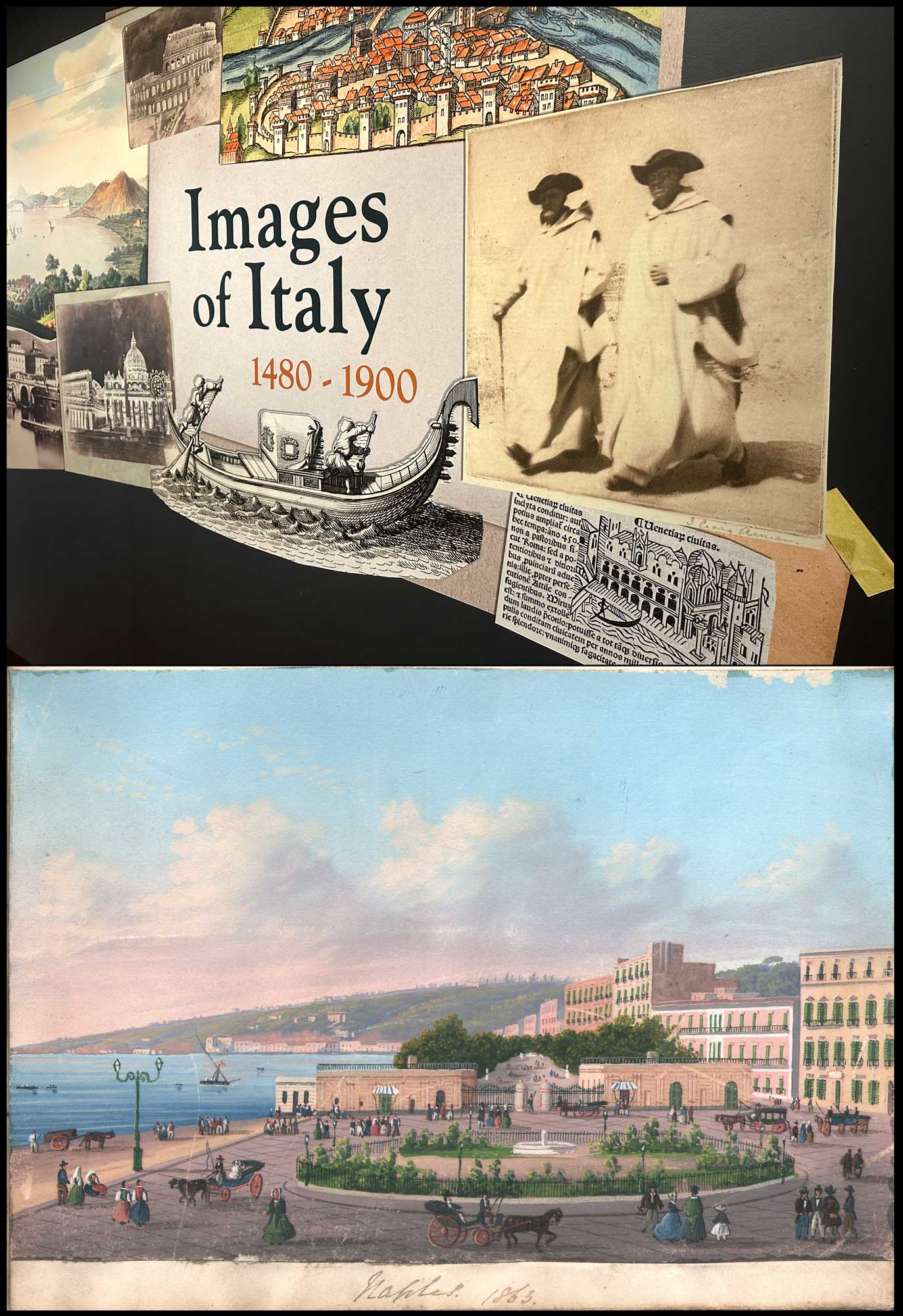
Top: A wall display for “Images of Italy 1480-1900” at the National Library of Scotland prominently features Scottish photographer James Craig Annan’s “White Friars”, taken in Italy in 1894. This is an early example of stop-movement photography made by Annan with a hand-held camera. Annan went to Italy in 1894 with Scottish artist David Young Cameron RA. (1865-1945) Both collaborated on making photographs and etchings of similar subjects, including these monks. Annan would go on to produce the 1896 portfolio Venice and Lombardy. Photo taken in October, 2024 by David Spencer for PhotoSeed Archive. Bottom: “Naples,. 1863.” Gouache on paper by unknown Italian School painter: 15.3 x 23.00 cm, pasted to album leaf: 19.0 x 23.0 cm. This is an example of a fine souvenir image done in the “vedute style”- a landscape or city view that is mostly topographical- having origins in the 18th-century paintings of Canaletto and Luca Carlevaris in Venice. This type of work was featured in the “Images of Italy” exhibit at the National Library. Contained within a family and “Grand Tour” album belonging to Major William Henry Carleton: 1831-1909, who served with distinction in the Scottish Highland regiment 21st Royal Scots Fusiliers. From: PhotoSeed Archive
But then things got better. When was the last time you encountered a marble bust on display of a famous photographer, who also happened to be an artist? And from 1868? Certainly, in my estimation, the Scottish people are historically way ahead of the curve when it comes to acknowledging the genius of photography! And not to leave the female gender absent, the wall card informs us the artist behind the sculpture was none other than Hill’s second wife, Amelia Robertson Hill. In fact, scholars have now credited her with helping her husband complete the Disruption painting by 1866. Included as part of the Portrait galleries (semi-permanent?) exhibition: HEROES & HEROINES – IDEALISM AND ACHIEVEMENT IN THE VICTORIAN AGE, Robertson Hill’s ““heroic” bust shows Hill wearing classical drapery rather than contemporary dress-furthering an immortalization and lasting impression for the ages of a real photographic innovator.
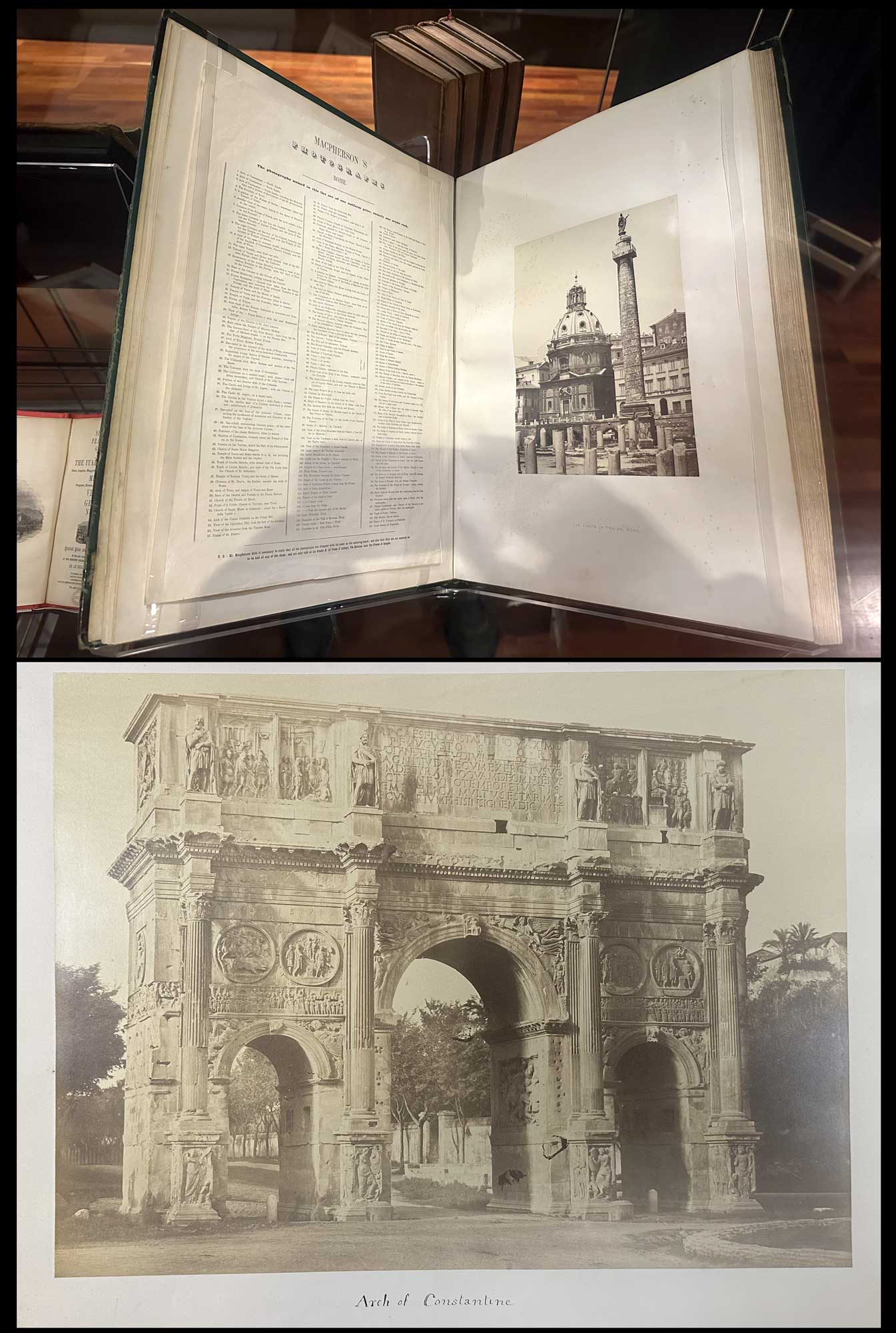
One of the photographic highlights of the “Images of Italy 1480-1900” exhibition at the National Library of Scotland was this collected portfolio titled “Macpherson’s Photographs Rome”. Opened to the index at left, it lists 191 different views available for purchase directly from the photographer’s Rome studio, including “The Forum of Trajan, Rome”, (cat. #20) at right. Robert Macpherson (1814-72) was born in Dalkeith, south of Edinburgh. The display card notes Macpherson: “Like many early photographers,…was initially an artist before turning to photography in 1851. Although based in Rome, Macpherson also took images of the surrounding countryside.” Photo taken in October, 2024 by David Spencer for PhotoSeed Archive. Bottom: Another example of one of Macpherson’s Photographs of Rome from this archive: “Arch of Constantine” (North facade) albumen silver print: 31.1 x 41.0 cm, mounted to primary support: 40.3 x 50.3 cm, with the artist’s blindstamp (trimmed) and 2. in graphite corresponding to index. From: PhotoSeed Archive
In the library at the Portrait gallery, I happened upon the volume A Perfect Chemistry: Photographs by Hill and Adamson, (Anne M. Lyden: National Galleries of Scotland: 2018) which helpfully reproduced several photographs by the duo taken in Edinburgh’s Greyfriars Kirkyard, and so I was off to see if I could find remains of some of the memorials shown in the early 1840s photographs. The library itself holds the world’s largest collection of Hill and Adamson’s photographs, with most digitized and accessible- a remarkable resource for those looking to do further research. As of this writing, The Scottish National Portrait Gallery has 6,154 artworks: original and later prints, calotype negatives, drawings and paintings by the Hill & Adamson, with 5,809 of these with images online.

Engineering and other marvels were seen, some from afar, during my Scotland visit, as well as one outside Newcastle, England- in honor of a visit to see where my father spent his boyhood and where my grandfather and his father made their living in the steel works along the river Tyne. Left: The Queensferry Crossing (bridge) from a speeding van heading to the Scottish Highlands: opened in 2017, the Crossing, at 1.7 miles long, “is the longest three-tower, cable-stayed bridge in the world.” (scotland.org). (David Spencer-PhotoSeed Archive) Middle: Nearby the Crossing is the Forth Bridge, seen here 20 years after it opened in 1890. Wikipedia notes the bridge “is considered a symbol of Scotland (having been voted Scotland’s greatest man-made wonder in 2016), and is a UNESCO World Heritage Site. It was designed by English engineers Sir John Fowler and Sir Benjamin Baker. Photograph by Frank G. Ensenberger, American: (1879-1966) bromoil print, 1910: 7.6 x 12.2 cm on mount: 27.0 x 22.3 cm. (PhotoSeed Archive) Right: The “Angel of the North” (1998) in Gateshead, England, by sculptor Sir Antony Gormley, is believed to be the largest sculpture of an angel in the world. It honors the regions industrial past, including coal mining and steel making. It is 66’ tall with a wingspan of 177’, larger than that of a Boeing 757 aircraft. Photo taken in October, 2024 by David Spencer for PhotoSeed Archive
It took a while, admittedly distracted by Greyfriars Bobby, the churchyard’s celebrity resident, now permanently lying at rest but helpfully alive in perpetuity nearby as a bronze statue. Similar to accessible memorials everywhere sporting touchable appendages: think- Abe Lincoln’s very shiny nose in Oakridge Cemetery, Springfield, IL- Bobby’s nose is equally bright- worn down by all those seeking good luck. At least for me, the act was infinitely easier than my experience 40 years ago as a student lying on my back kissing the Blarney Stone. The legend goes that Bobby, believed to be a long-haired Skye Terrier, guarded his owner’s grave in the Kirkyard for 14 years after his owner died in 1858, and after his own passing in 1872 was buried near his owner’s grave. But I digress. Soon, with the help of my amused wife, we found the remains of the Paton and Chalmers Monuments I saw in the book photographed by Hill & Adamson in 1843. Much weathered, I could not line up a modern day perspective due to a large tree and other changes in the topography, but a reasonable view was captured.
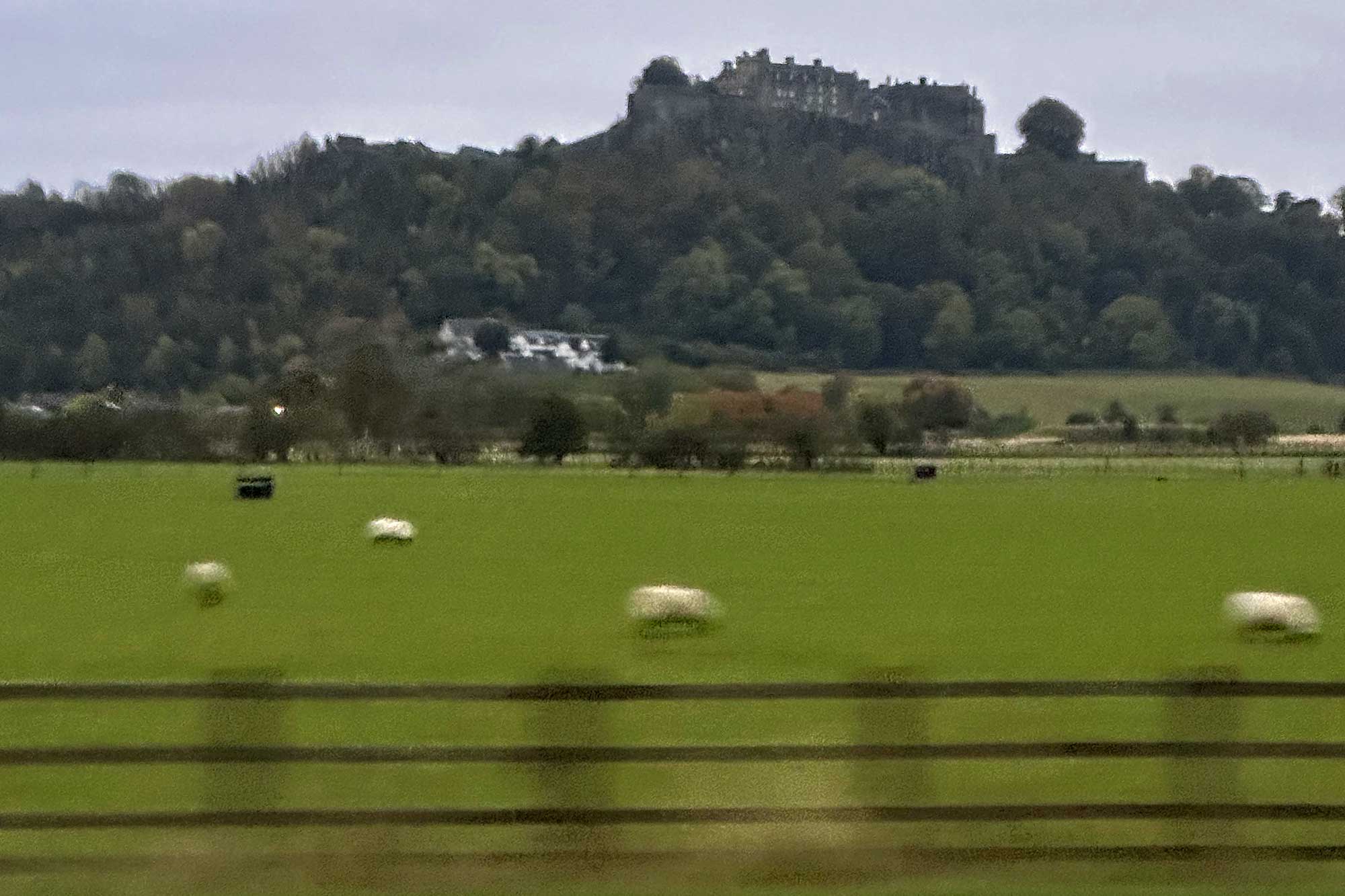
Although a personal visit did not occur on our trip to the Scottish Highlands, my wife and I spied Stirling Castle going, I believe, a bit above the posted speed limit-apologies for the whizzing sheep in foreground. Sitting atop an intrusive crag here on the horizon, Stirling dates from at least the early 12th century, with the present buildings mostly built between 1490 and 1600, and is one of the largest and most historically and architecturally important castles in Scotland. Photo by Shannon O’Brien
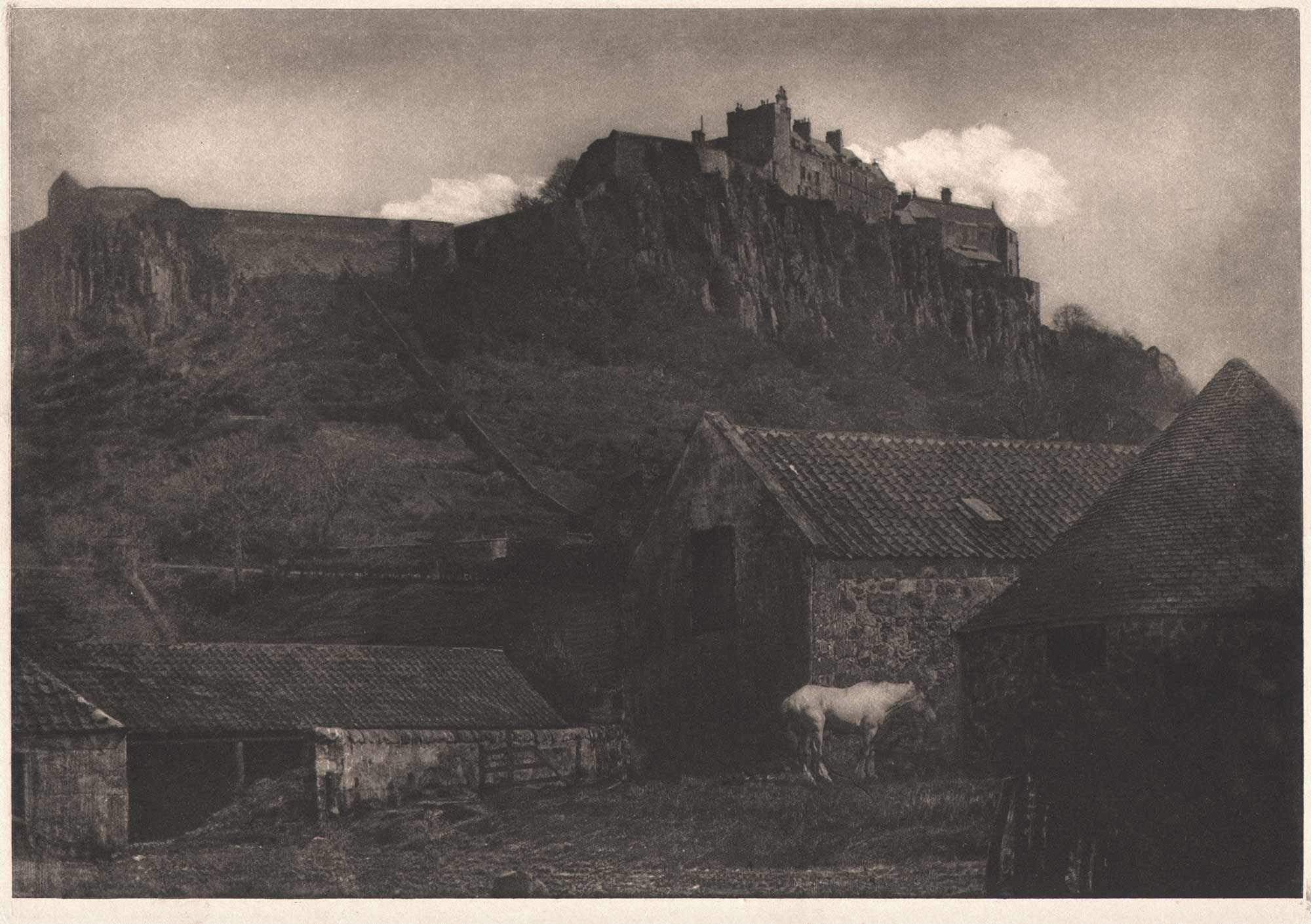
“Stirling Castle”, James Craig Annan, Scottish: 1864-1946, hand-pulled tissue photogravure 15.0 x 21.8 | 20.0 x 28.0 cm on mount 21.0 x 30.2 cm. Published, 1907: Camera Work 19. Mary, Queen of Scots, was crowned at Stirling Castle, and Before the union with England, the castle was also one of the most used of the many Scottish royal residences, very much a palace as well as a fortress. From: PhotoSeed Archive
While researching Scottish photographers and Edinburgh, I realized I owned some photographically illustrated volumes featuring the city taken by Scottish native sons George Washington Wilson: born in Alvah, Banffshire: 1823-1893, and Thomas Annan: born in Dairsie, Fife: 1829-1887. These latter works were included in an 1866 edition of the narrative poem Marmion: A Tale of Flodden Field, written by Edinburgh poet Sir Walter Scott, (1771-1832) whose magnificent 200’ tall memorial- believed to be the largest dedicated to a writer- is a city landmark located just outside the Waverly train station, itself appropriately named after his groundbreaking historical Waverly novels.
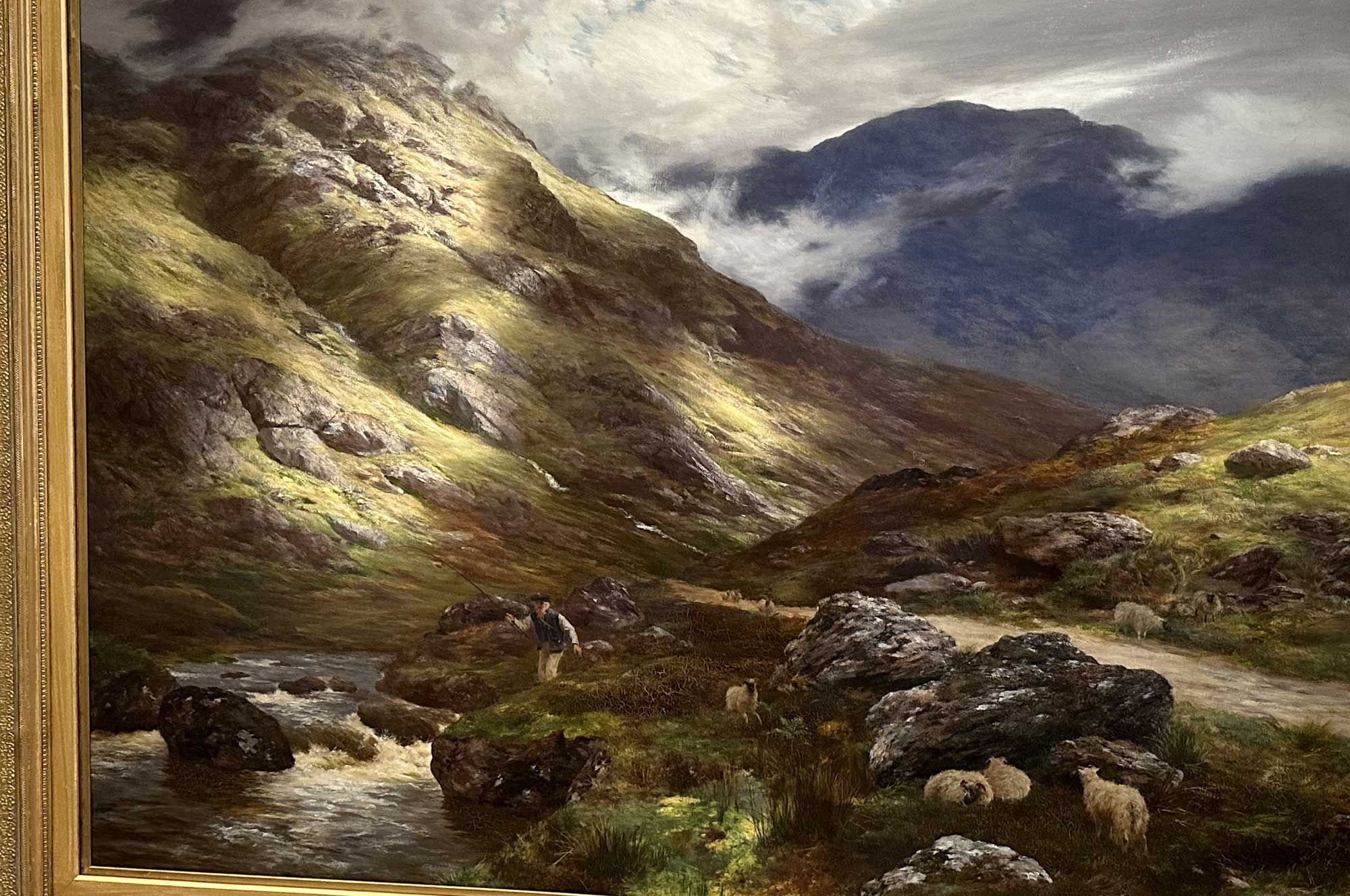
Before heading to the Scottish Highlands, I thought it might be interesting to contrast work on display in the National Galleries of Scotland with my own visual record. This is a detail of artist Peter Graham’s (1836-1921- born Edinburgh) magnificent oil painting “Wandering Shadows”, from 1878. From the wall card: …the work “exemplifies the romantic vision of the Scottish Highlands at its peak. Its grand scale matches the breathtaking nature of the scenery. Graham specialised in remote, uninhabited views, often veiled by mist and featuring dramatic light effects. His successful formula drew on the earlier paintings of Horatio McCulloch as well as the writings of Sir Walter Scott. It was also based on a close observation of nature. Graham’s Highland landscapes proved highly popular and were regularly reproduced.” (photo of painting by David Spencer)
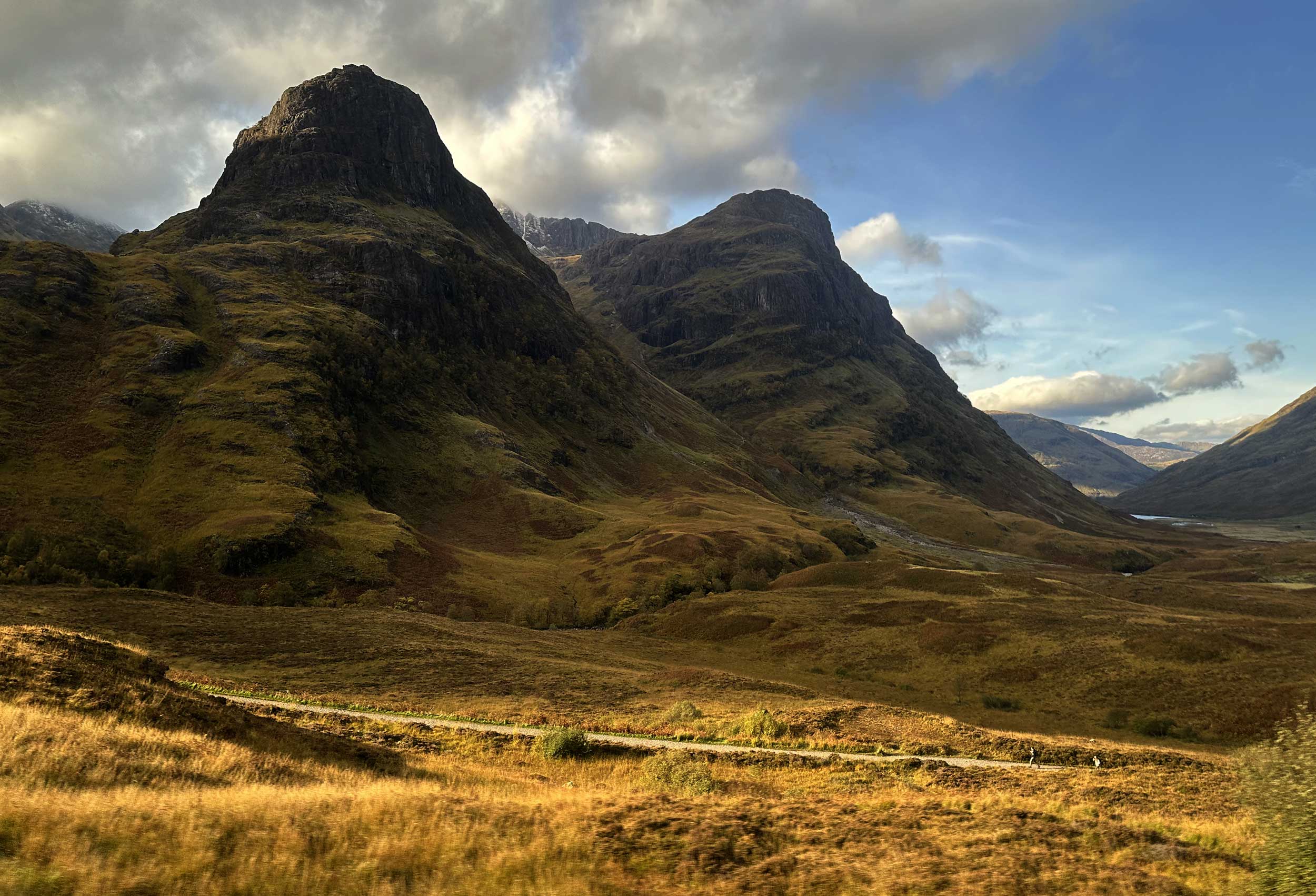
I may not have captured mist or sheep in my version of Graham’s painting, but early morning light as well as a few hikers were evident in this idyllic scenic captured near the village of Ballachulish, Glencoe, in Western Scotland. We covered a lot of ground and history on this day trip, thanks to our guide Kieran from Rabbie’s, (highly recommended) with this snap done through the window of our our speedy passenger van. Photo taken in October, 2024 by David Spencer for PhotoSeed Archive
In a chance visit to the National Library, I stumbled on the exhibit “Images of Italy”, which showcased work by the important Scottish photographers Robert Macpherson (born Dalkeith, Scotland: 1814-72) and James Craig Annan, a favorite of this archive. (born Hamilton, South Lanarkshire, Scotland: 1864-1946) I’ve uploaded several examples of their work, including Annan’s famous view of Stirling castle outside Edinburgh.
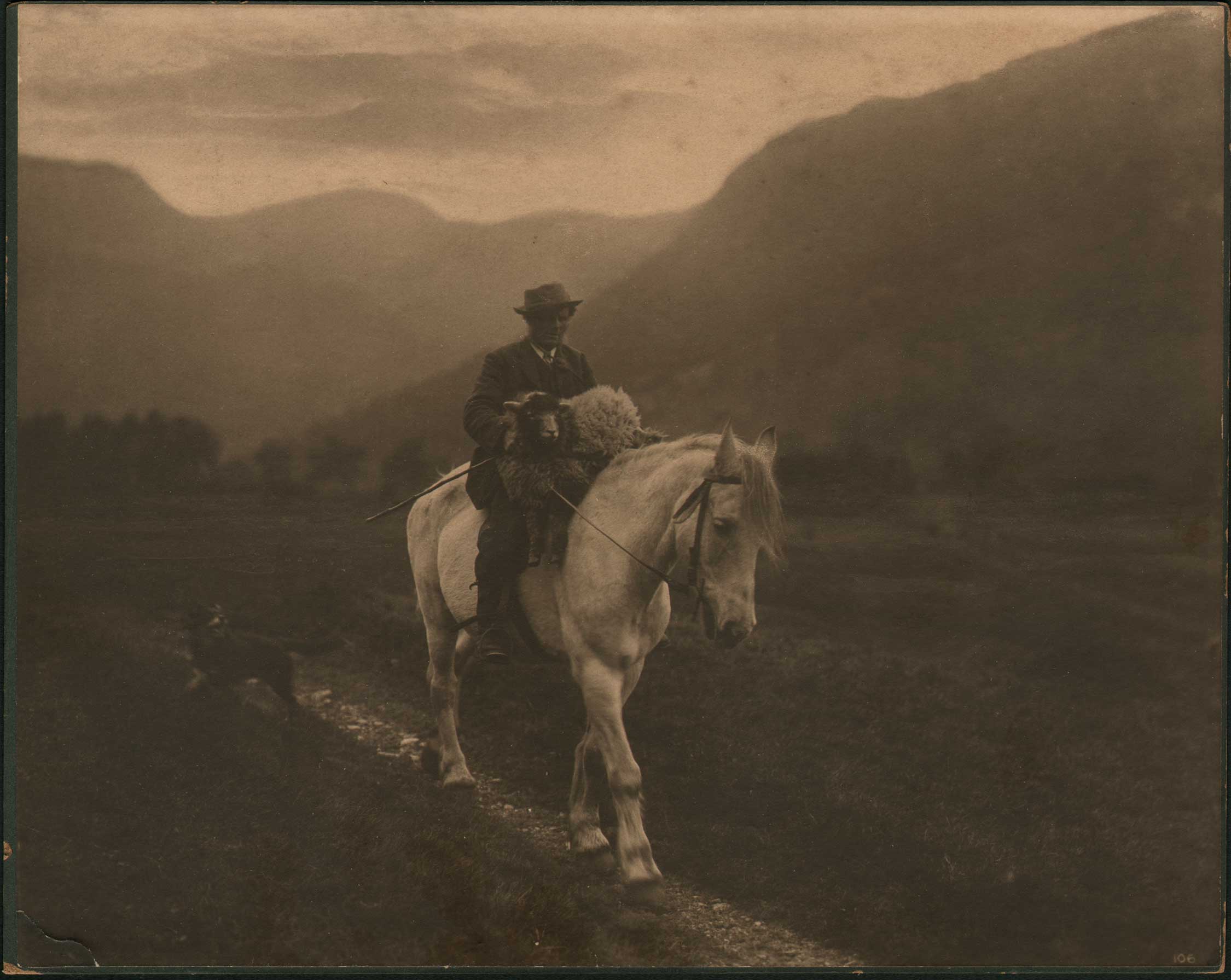
“The Herdsman”, Charles E. Walmsley (1862-1941) English. 1911, carbon print: 19.2 x 24.2 cm mount: 19.5 x 24.5 cm. Published originally as a photogravure plate in William Wordsworth’s Complete Poetical Works. (Vol. VI The Excursion) A note on this illustration states: “A Herdsman on the lonely mountain-tops.” “Frequently the shepherd finds a sheep with a broken leg or otherwise hurt. It is carried home and tended with great care. Sometimes the broken limb is set on the spot.” From the Electric Scotland website, we learn more about the metaphorical representation Wordsworth has cast this shepherd as “the wanderer” : “the striking delineation which Wordsworth has given of the early surroundings of his ‘Wanderer,’ and the circumstances that moulded his character, special stress is laid on the clerical influence which from infancy had guarded this son of the Braes of Athol.” From Ambleside, Charles Ezekiel Walmsley lived most of his life in Prospect Cottage. His working life was spent as a landscape photographer capturing images of the Lake District’s villages and fells. From: PhotoSeed Archive
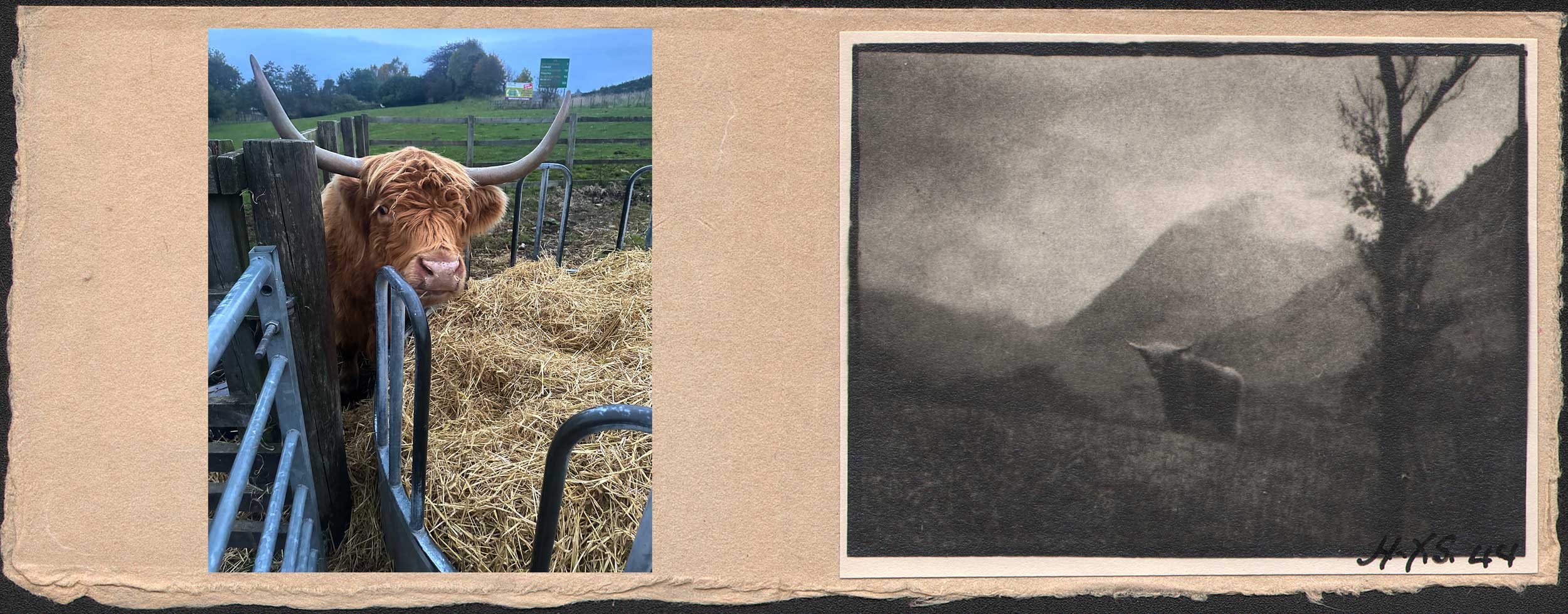
Left: (inset) We did manage to see a few long-horned Highland cattle on our short trip, but none grazing in the Scottish wilds. A Scottish breed of rustic cattle, Wikipedia notes the breed “originated in the Scottish Highlands and the Western Islands of Scotland and has long horns and a long shaggy coat. It is a hardy breed, able to withstand the intemperate conditions in the region. The first herd-book dates from 1885; two types – a smaller island type, usually black, and a larger mainland type, usually dun – were registered as a single breed. It is reared primarily for beef, and has been exported to several other countries.” This big guy looks out from his enclosure from a farm store in Perthshire. (David Spencer for PhotoSeed Archive) Right: “Bull or Cow in Scottish Highlands” : H.Y. Summons, English: gelatin silver holiday card, 1944: 7.9 x 10.2 cm within folder 17.2 x 22.5 cm. From: PhotoSeed Archive
A photograph of the John Knox house in Edinburgh by Archibald Burns from my collection, who was based in the city from the early 1850s, (b. 1831-1880) is one of 8 Carte de visite albumen views in this archive included with this post. Interestingly, both Thomas Annan and Burns took up residence and trade in the former photographic studio known as Rock House, previously home to Robert Adamson and then D.O. Hill.
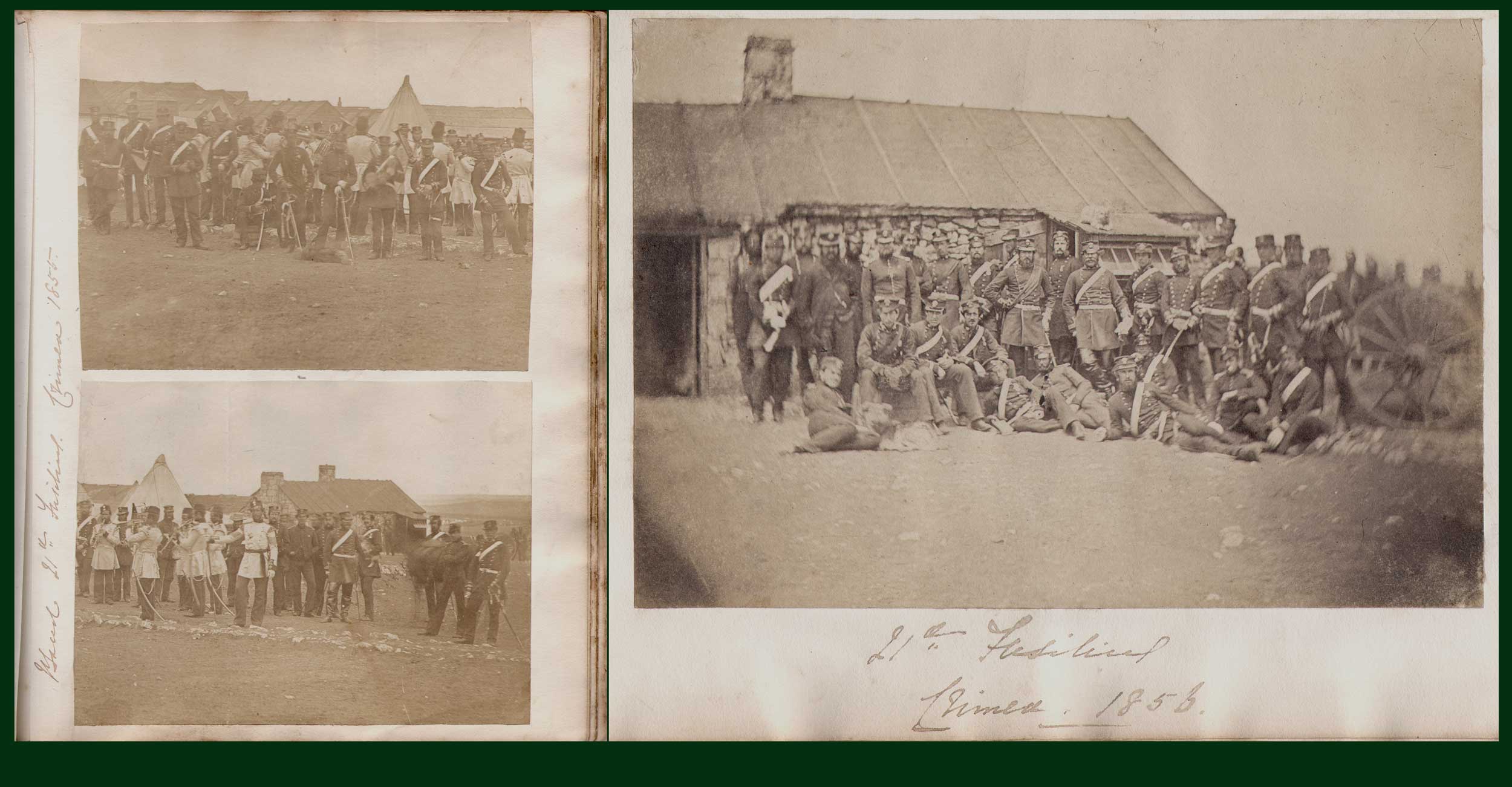
We of course learned about the familial Scottish clans and their many feuds on our trip to the Highlands, but also of Scotland’s military prowess. As luck would have it, this archive owns a few Crimean War salt prints featuring a famed Scottish regiment. Left: “Band 21st (Royal North British) Fusiliers. Crimea 1855.” James Robertson, English: 1813-88) salted paper print cut in halves from original: top: 10.9 x 14.3 cm, bottom: 10.8 x 14.2 cm on album leaf 23.0 x 19.0 cm. Contained within a family and “Grand Tour” album belonging to Major William Henry Carleton: 1831-1909, who served with distinction in the (then named) Scottish regiment 21st Royal North British Scots Fusiliers Regiment of Foot . Another example, uncut: Royal Collection Trust: RCIN 2500655. Right: “21st Fusiliers Crimea. 1856.” James Robertson, attributed: salted paper print: 12.2 x 17.6 cm on album leaf 19.0 x 23.0 cm. . Carleton’s obituary: “The death is announced as having taken place on December 26 at Raveagh, County Tyrone, (Ireland) of Major William Henry Carleton, late of the 21st Foot (Royal Scots Fusiliers). Major Carleton served with his regiment throughout the Eastern campaign of 1854-55, including the battles of Alma, Balaclava, and Inkerman, and the siege and fall of Sevastopol. He received for his services the medal with four clasps, the Turkish medal, and was nominated a Knight of the Legion of Honour. He retired from the Army in 1870.” From: PhotoSeed Archive
I’ve included examples of both Annan’s work here, along with a few earlier Crimean war salt prints depicting members of the famed Scottish regiment 21st Royal North British Fusiliers.
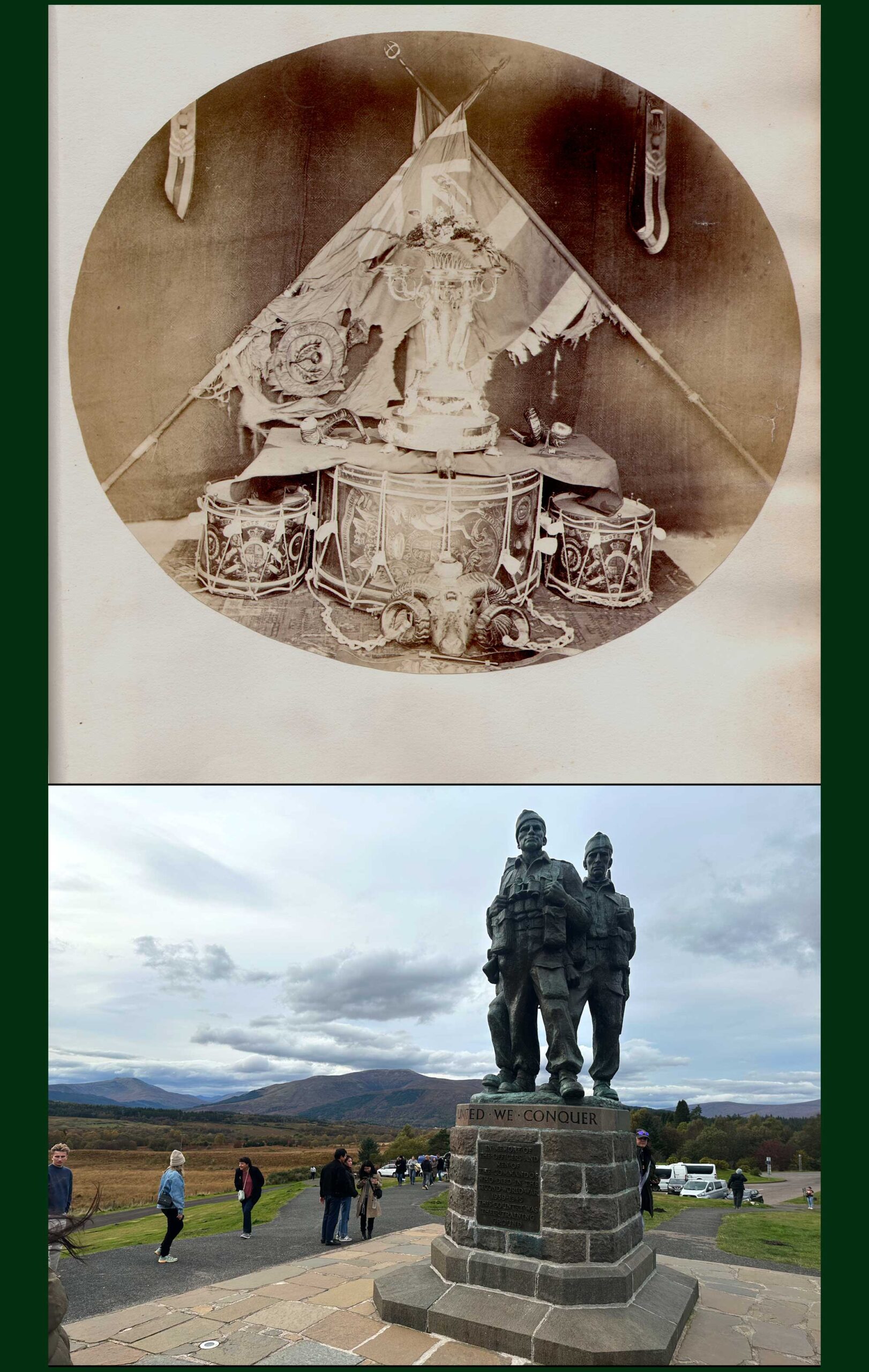
Top: This still life, most likely taken by an English photographer, is a later albumen silver print from the post Crimean War era. (1860-70) It shows a composition of two crossed battle-scarred flags in background-perhaps Crimean War relics, with an elaborate silver trophy at center placed on a large drum of the Royal North British Fusiliers. At left and right are smaller drums for the Royal Scots Fusiliers, as well as a Rams head with horns at front. In 1877, the Royal “North British” designation was dropped and the 21st regiment became known as the 21st (Royal Scots Fusiliers) Regiment of Foot. Further information is welcomed. Photograph: 14.6 x 16.7 cm on album leaf 23.0 x 19.0 cm. Contained within a family and “Grand Tour” album belonging to Major William Henry Carleton: 1831-1909, who served with distinction in the then Scottish regiment 21st Royal North British Fusiliers. From: PhotoSeed Archive. Bottom: The later achievements of Scottish troops fighting in World War II can be seen in The Commando Memorial, located in Lochaber, Scotland. Unveiled by the Queen Mother in September 1952, it’s dedicated to the memory of all Commandos who gave their lives in the service of Scotland during the 1939-1945 War. Photo taken in October, 2024 by David Spencer for PhotoSeed Archive
These were taken by British great James Robertson, (1813-88) and various other nuggets unearthed to celebrate the Highlands themselves: some of the most remarkable scenery I was able to visit firsthand.
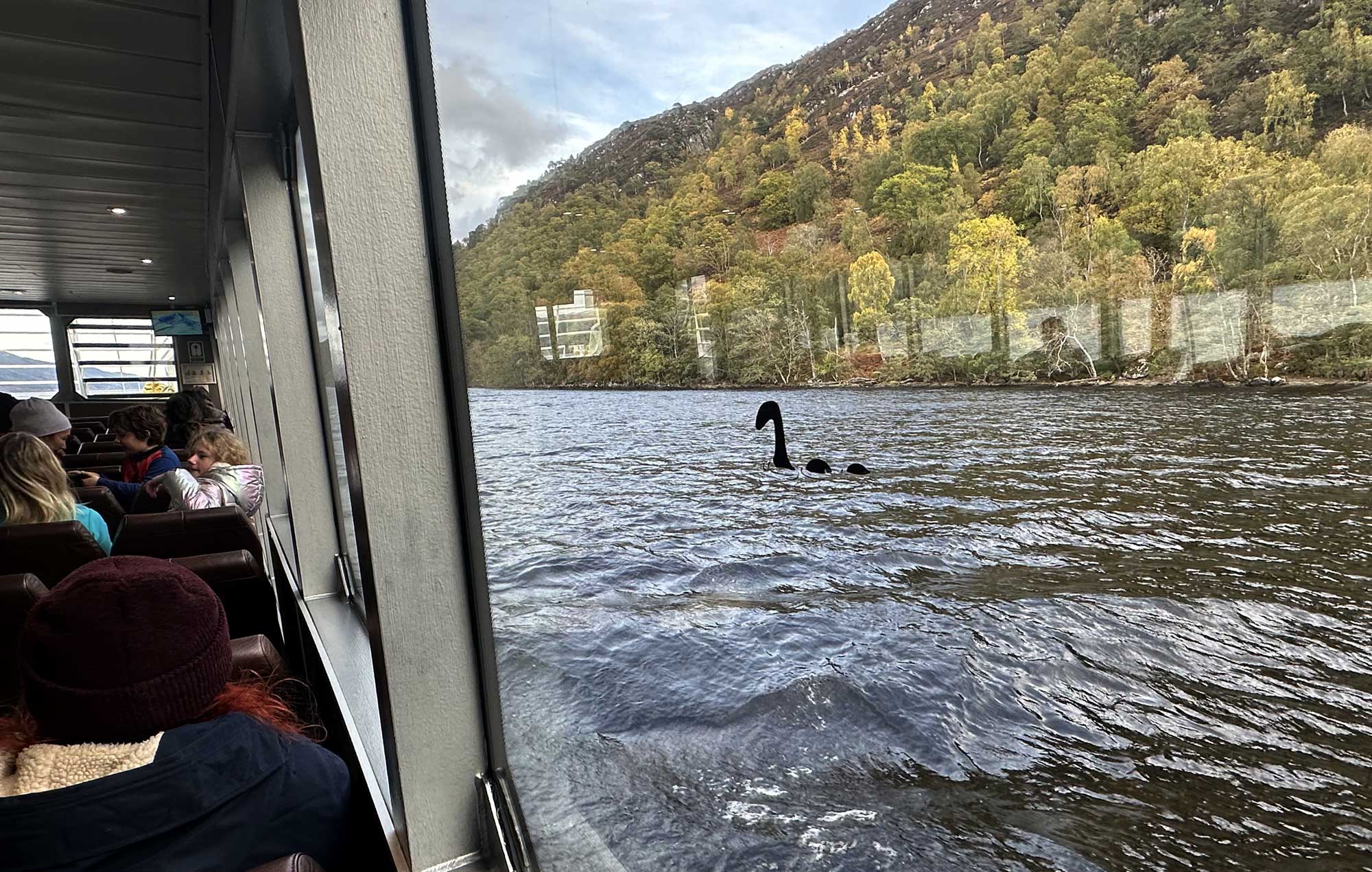
Southwest of Inverness, aboard the Spirit of Loch Ness, “Nessie”, the cryptozoological nomad of the second deepest loch in Scotland, is briefly seen—or at least partly emerges from the loch surface due to some careful alignment with my iPhone. Fun fact: 755’ at its deepest point, Loch Ness contains more water than all the lakes in England and Wales combined. Although sightings go all the way back to 565 AD, when the Irish monk Saint Columba encountered a “water beast” at the loch, that wonderful medium of photography can be blamed for modern day interest, fueled by “evidence”- the best known being the so-called “surgeon’s photograph” of 1934. Originally published in the Daily Mail newspaper on April 21, 1934, it carried the claimed authorship of Robert Kenneth Wilson. Local shopkeepers seem happy, as visitors from around the world continually descend on the area, including yours truly. Photo taken in October, 2024 by David Spencer for PhotoSeed Archive
I hope you may be inspired by these examples of historical Scottish photography and artwork going back to the early 1840’s, as well as my modern day snaps, in order to inspire, give insight, and make you want you to learn more about Scotland in general. So plan a visit yourself, to a fiercely independent nation whose motto: “Nemo Me Impune Lacessit” translates to “No one provokes me with impunity.”
-
My timing was not perfect to the Portrait gallery, as I learned the opening of an exhibit celebrating 40 Years of Scotland’s Photography Collection would open the following week of my visit. Including a stunning series of New Haven fishwives photographs (calotypes) by Hill & Adamson taken in the early to mid 1840s, the exhibit is described: “highlights from the nation’s world-class collection of over 55,000 photographs. Find famous faces, gems of early Scottish photography and new acquisitions which push the boundaries of photography.”
